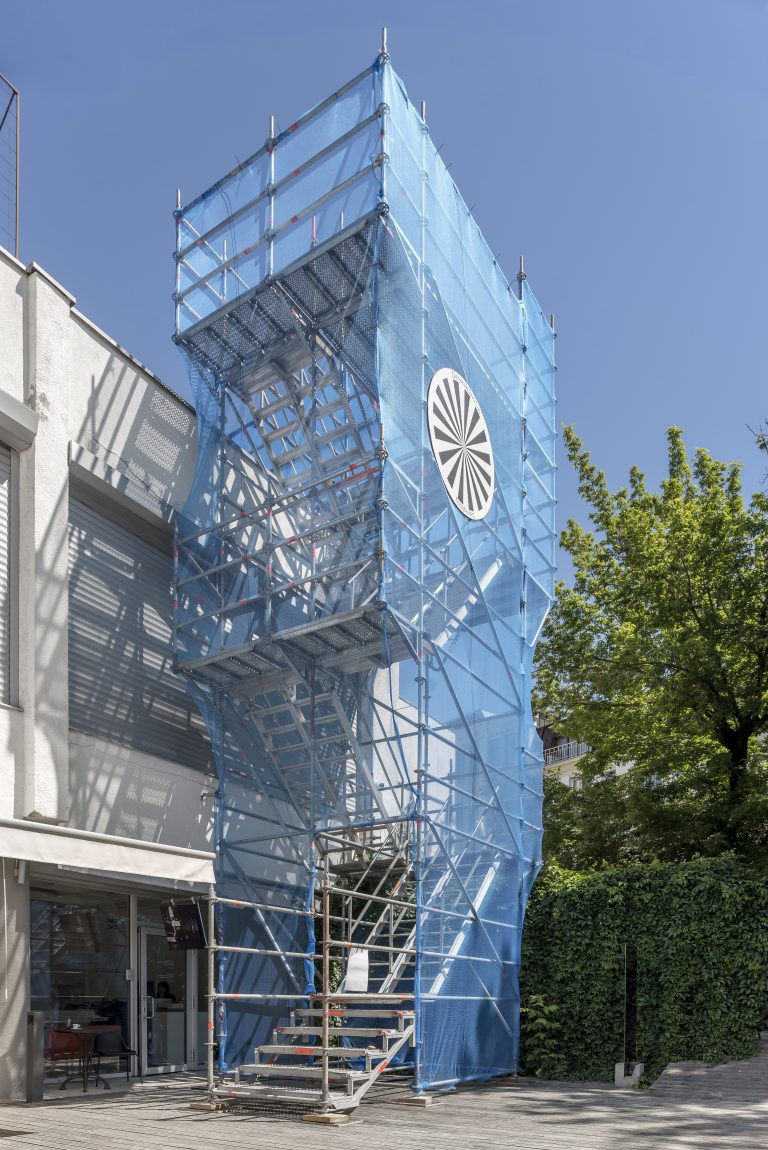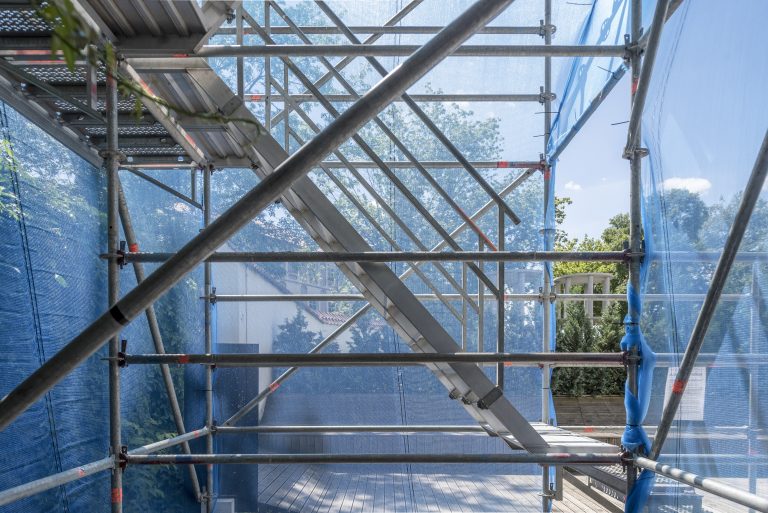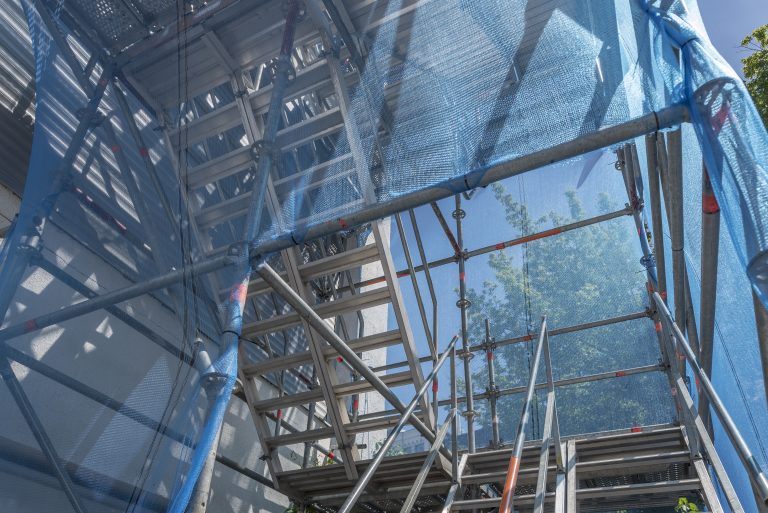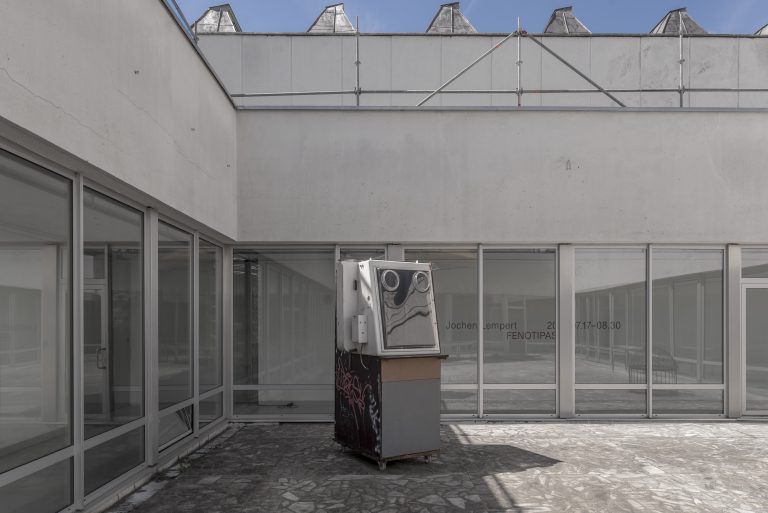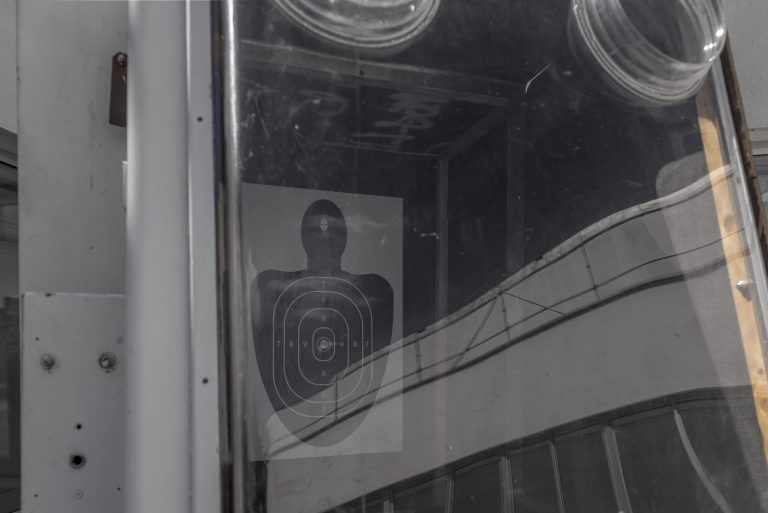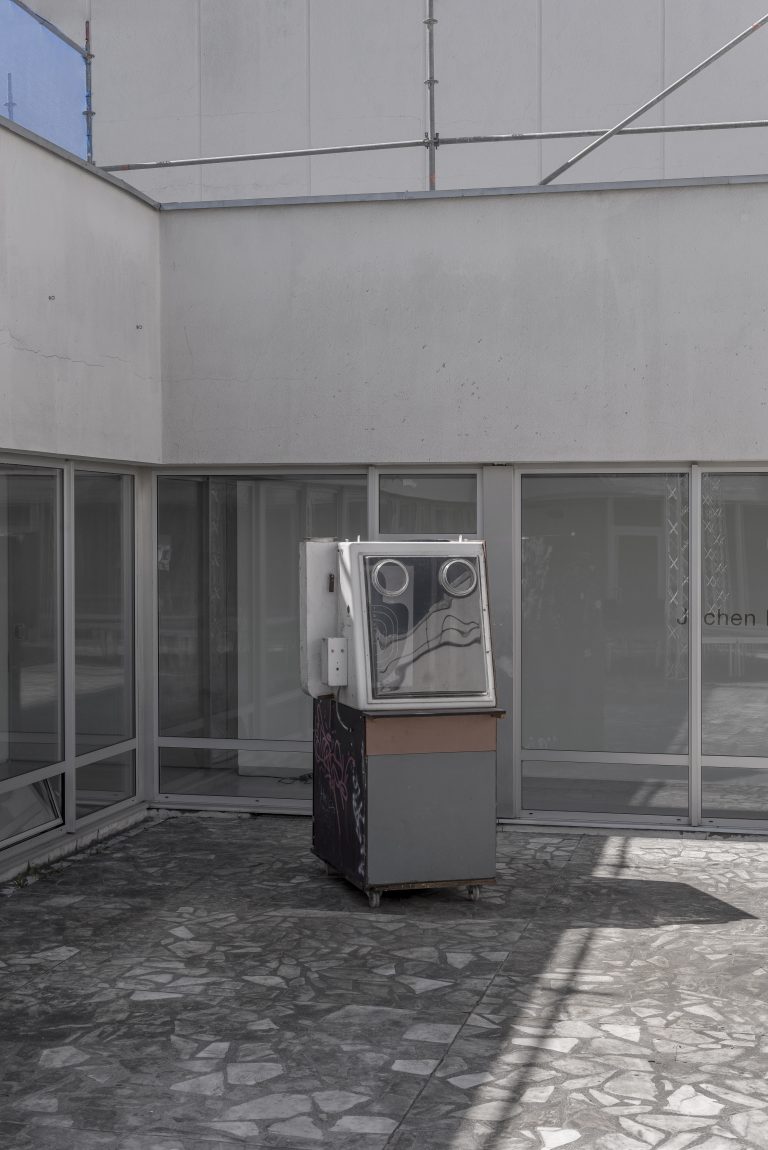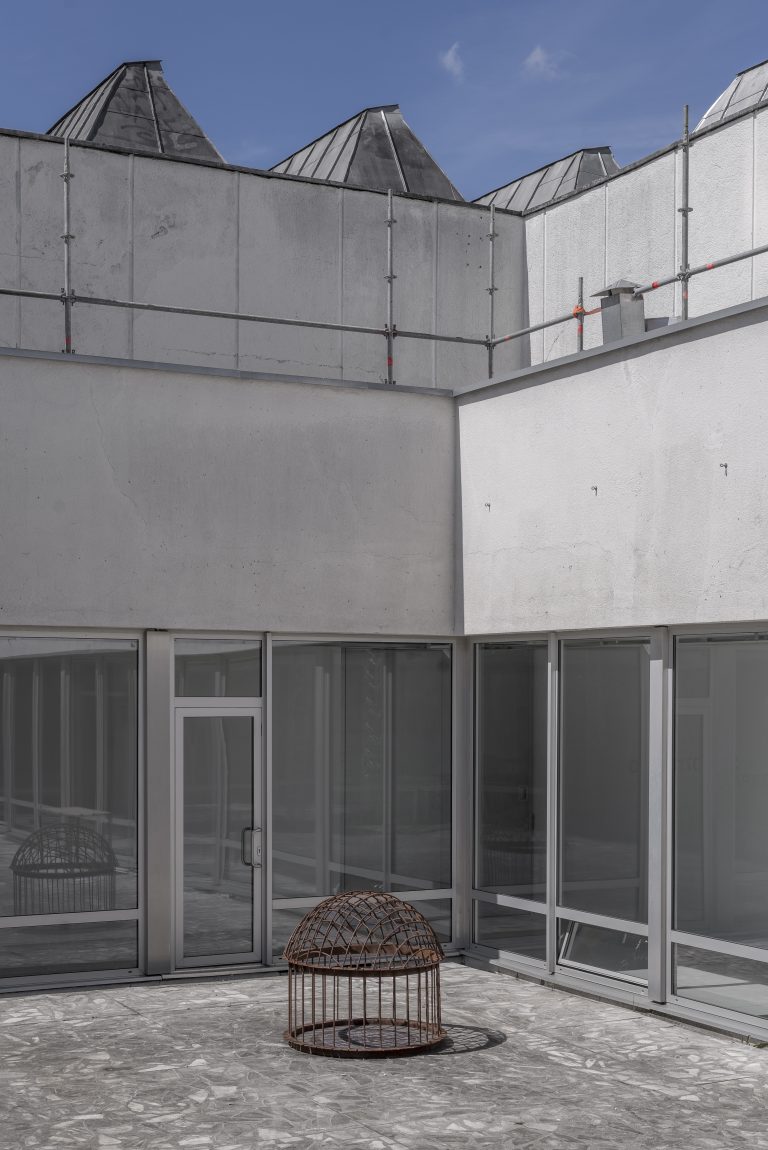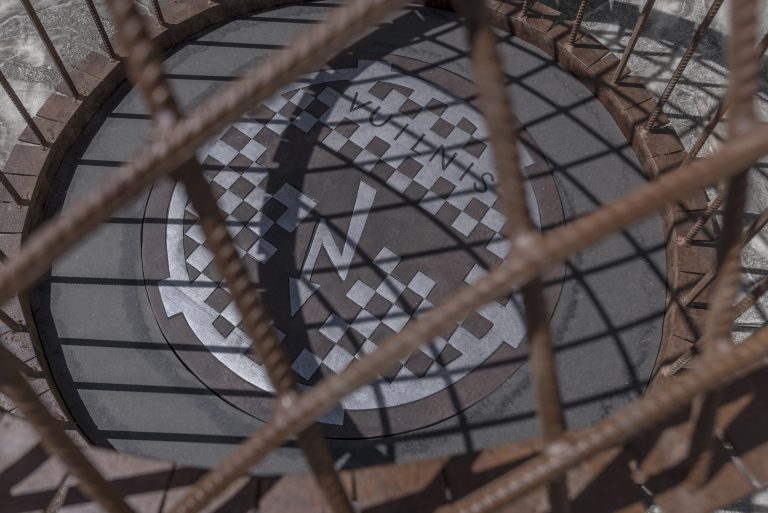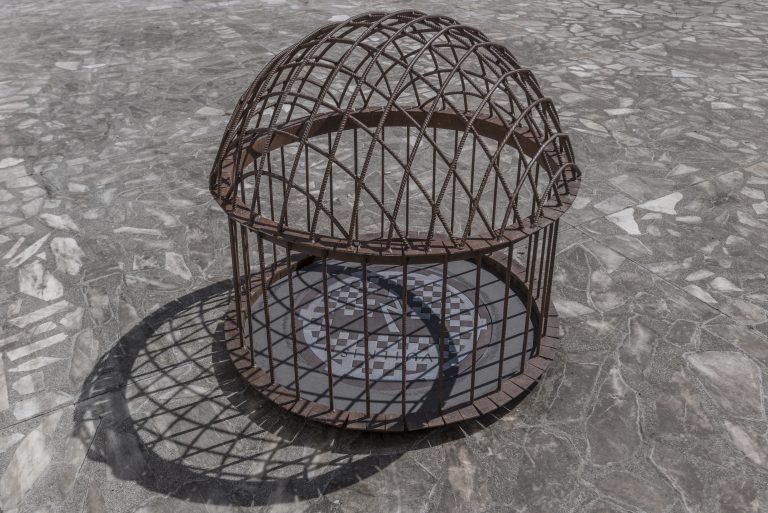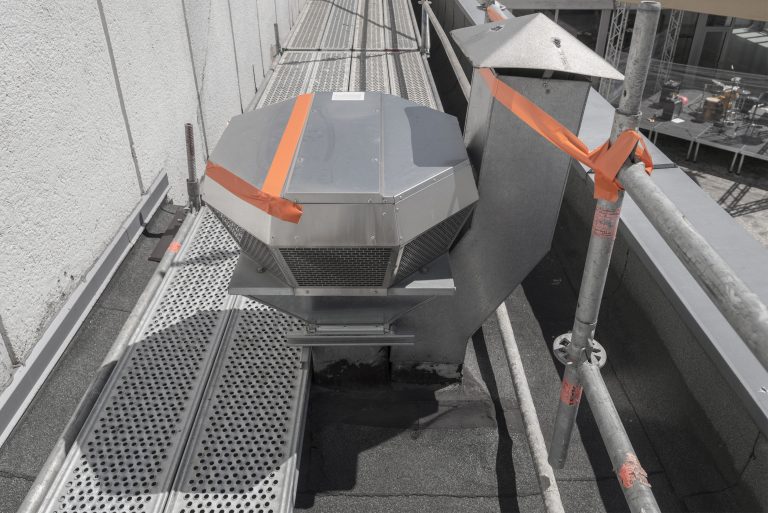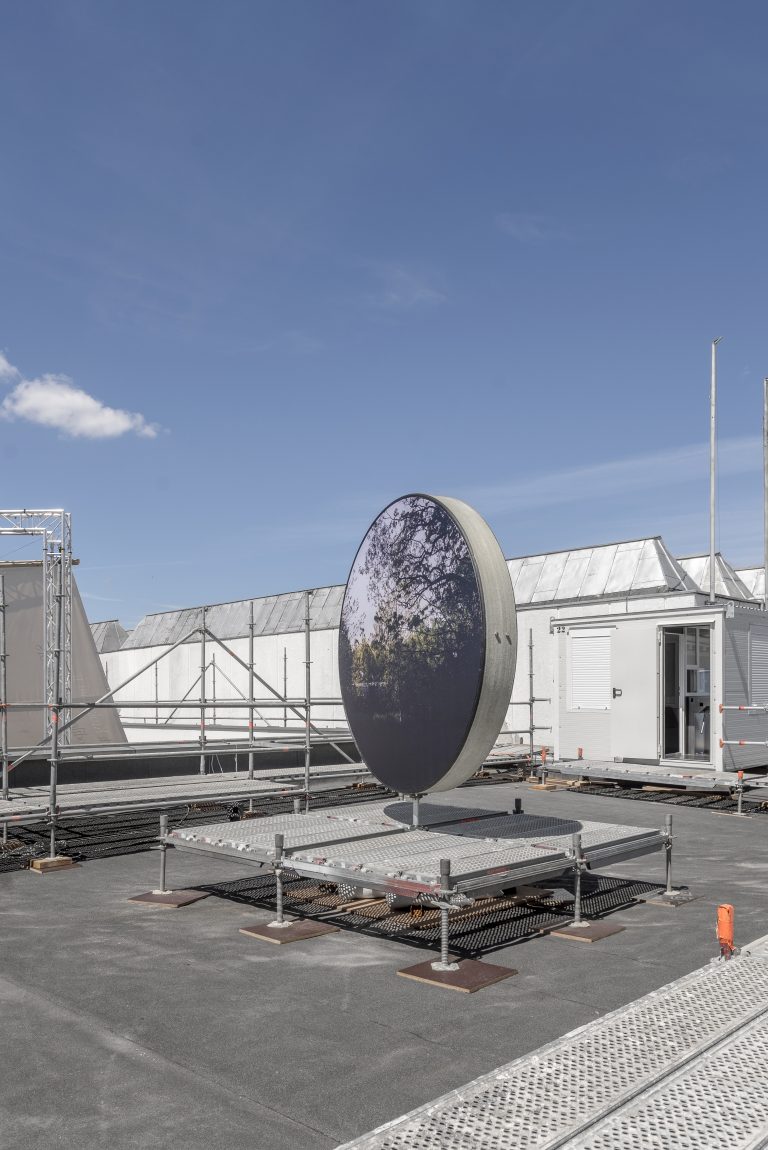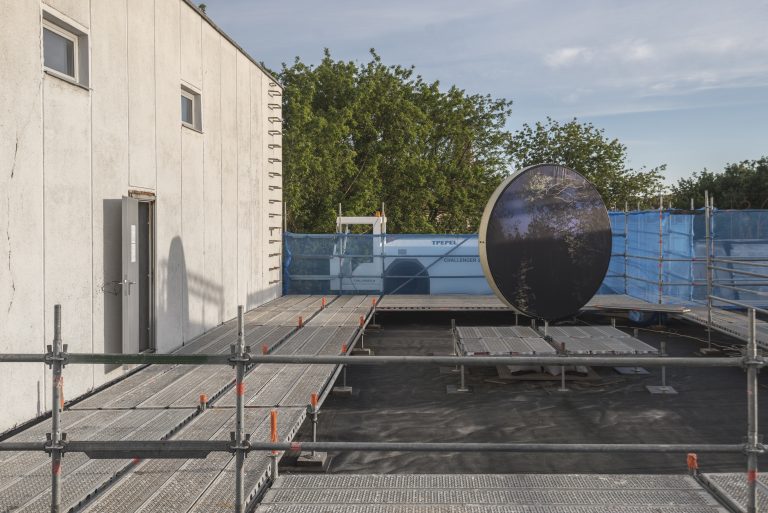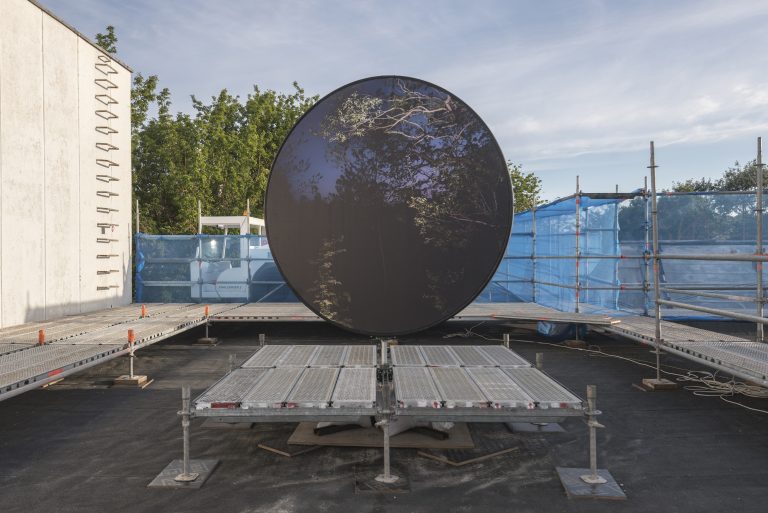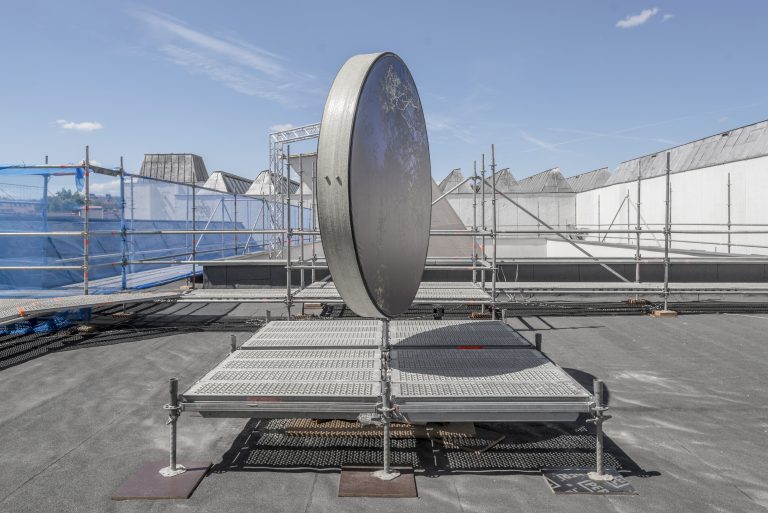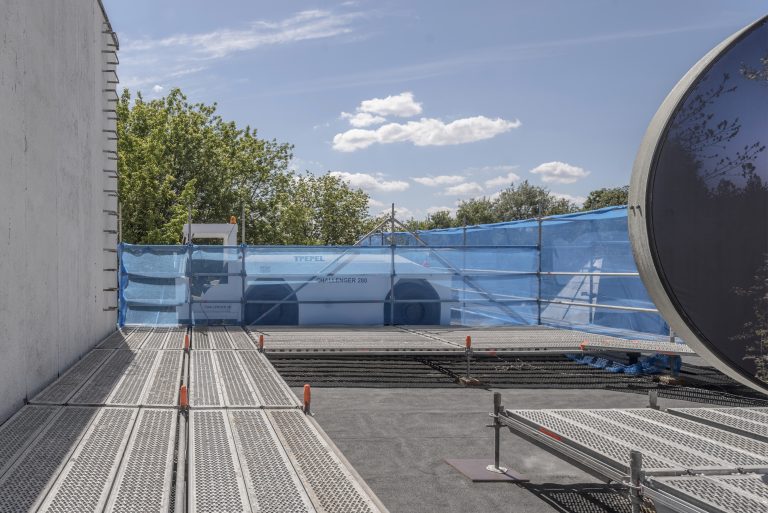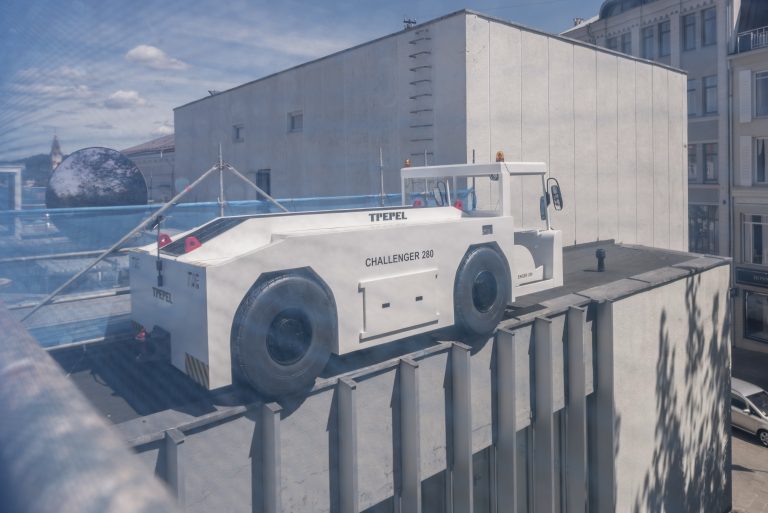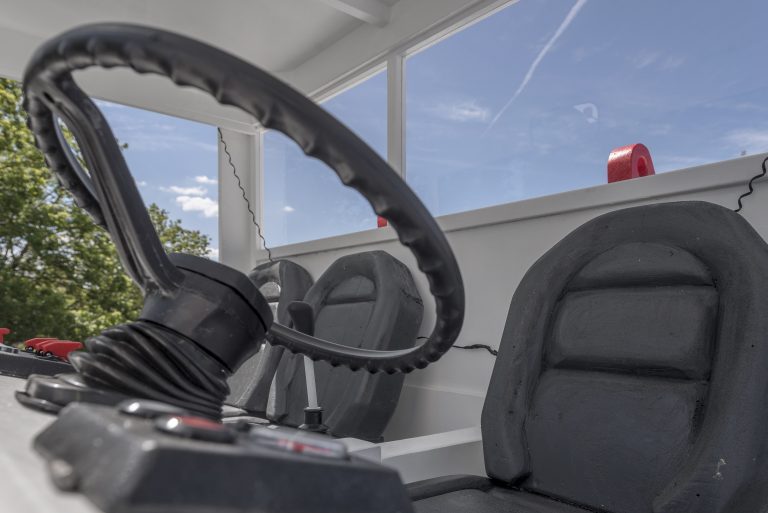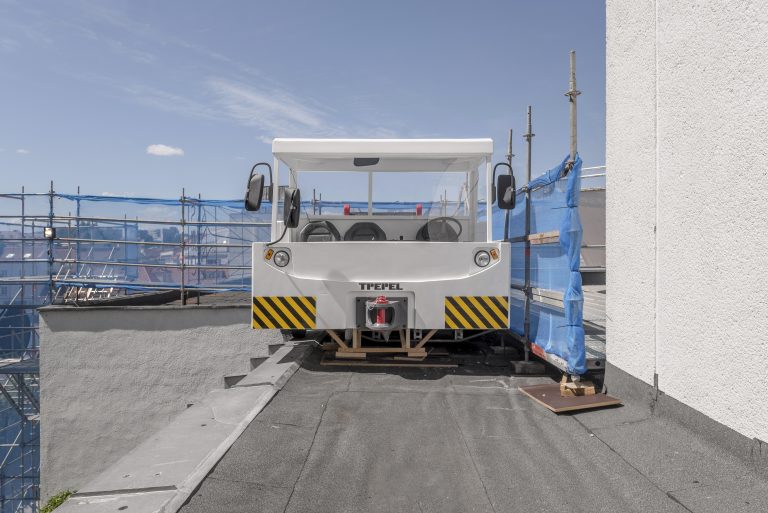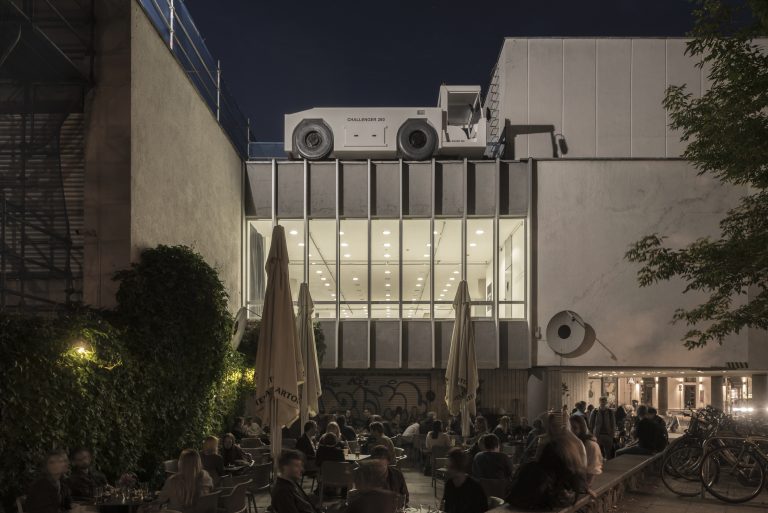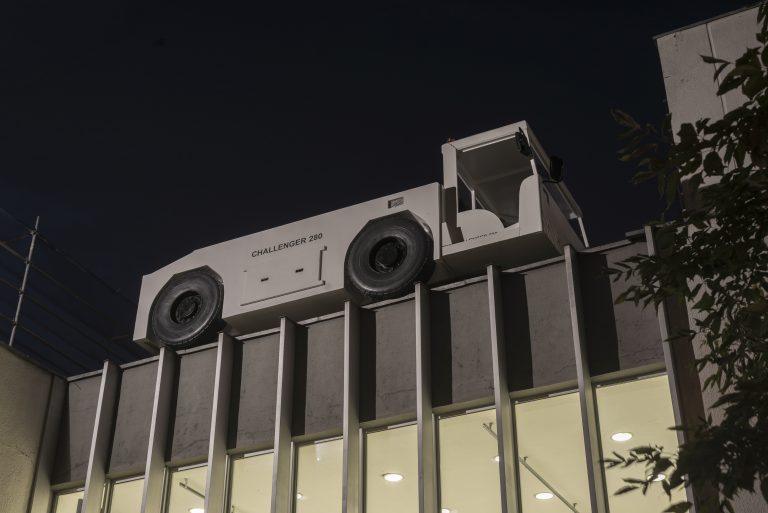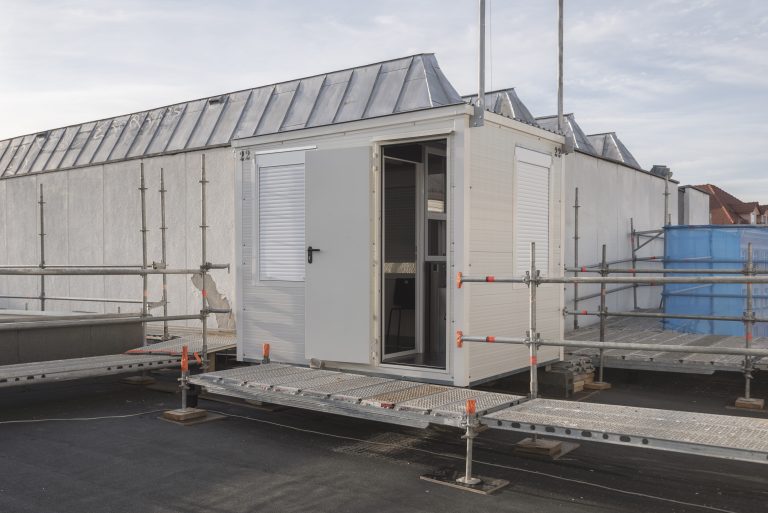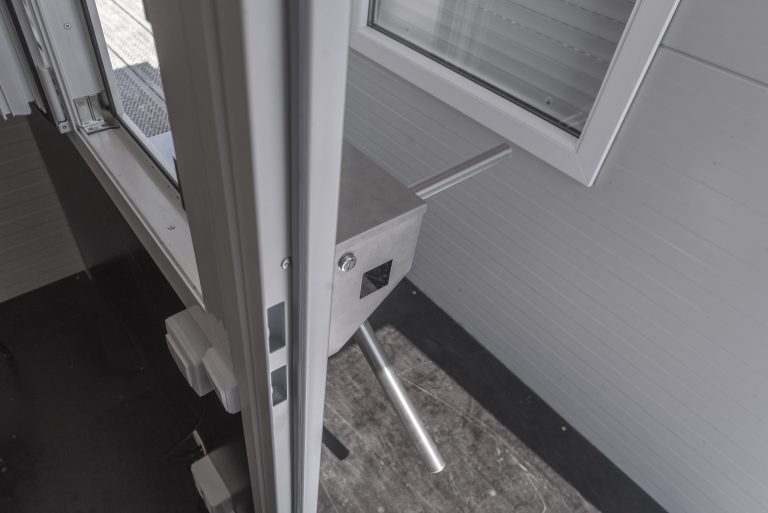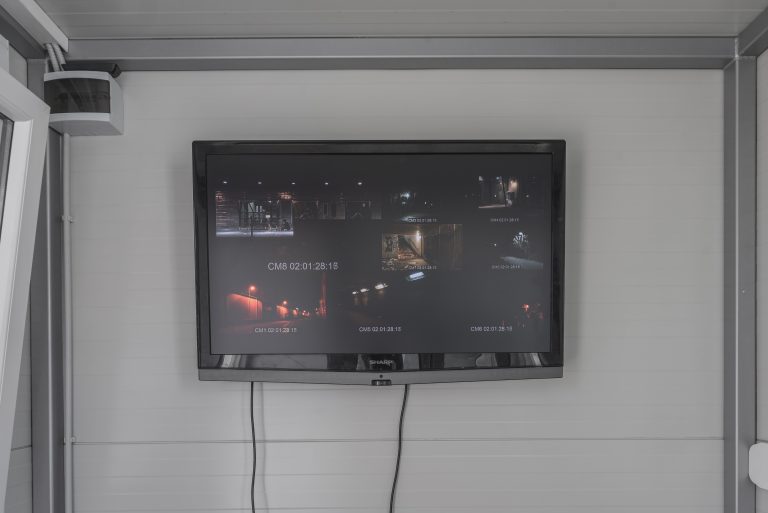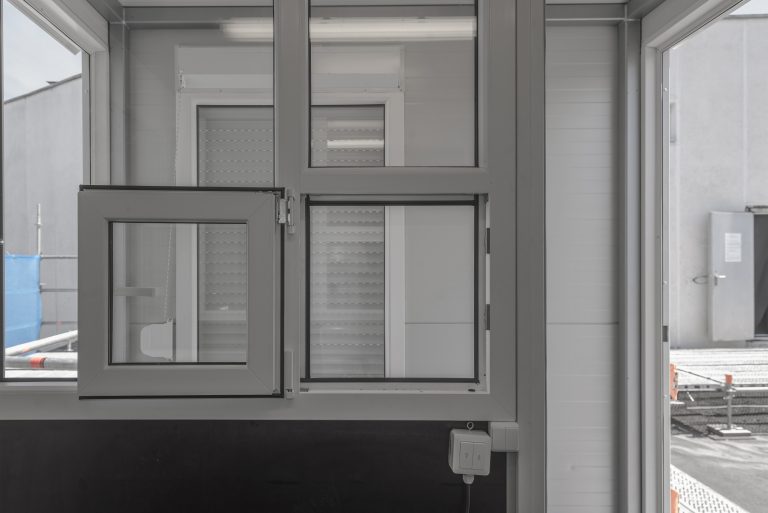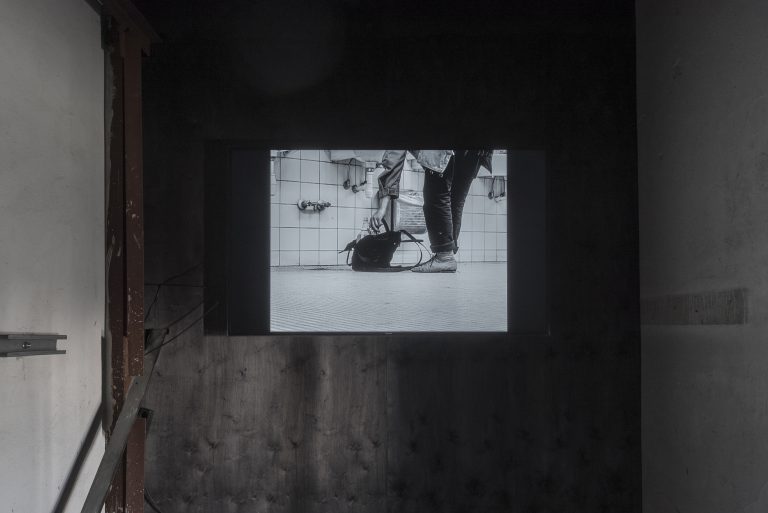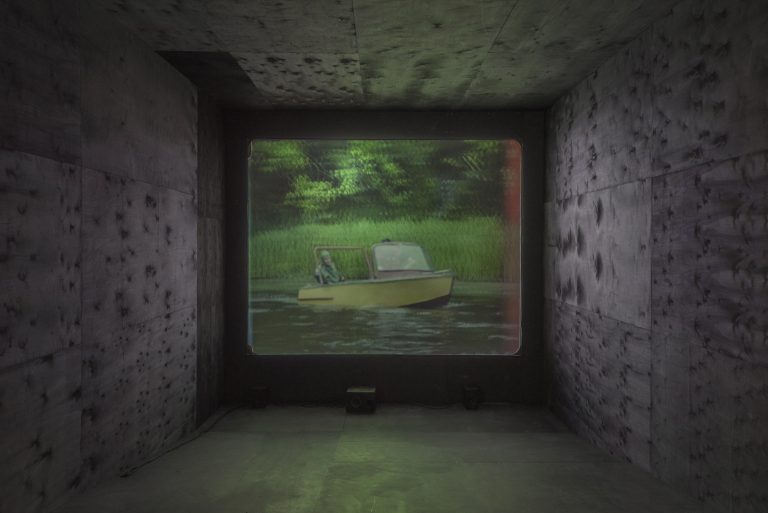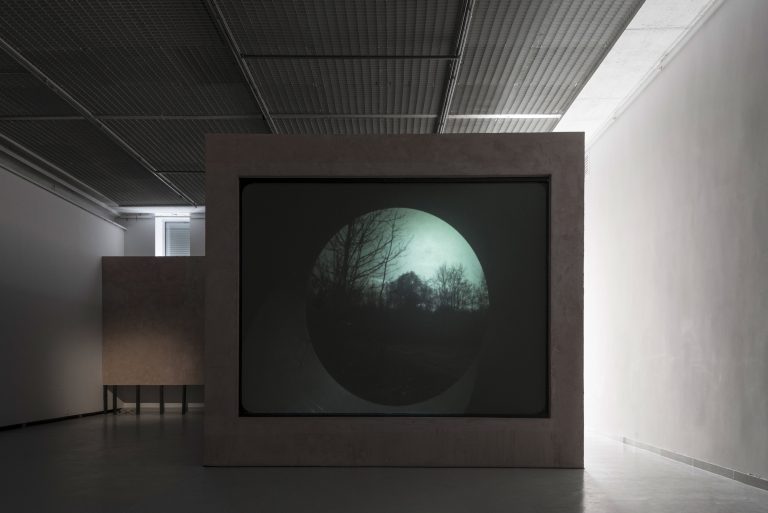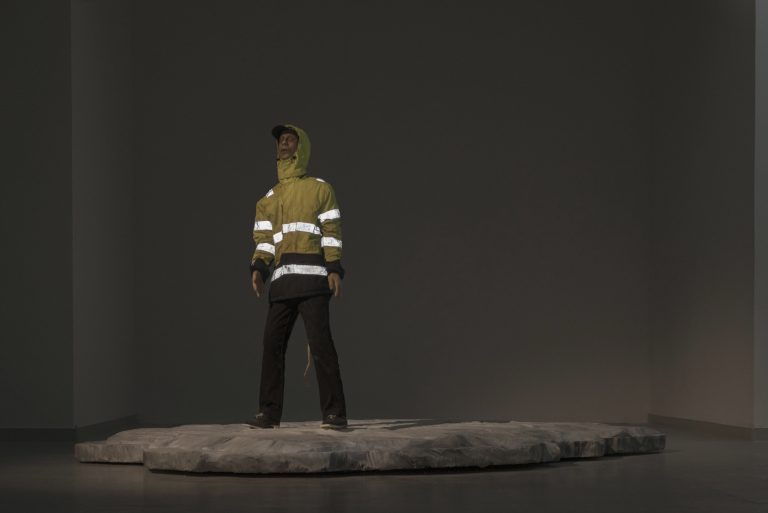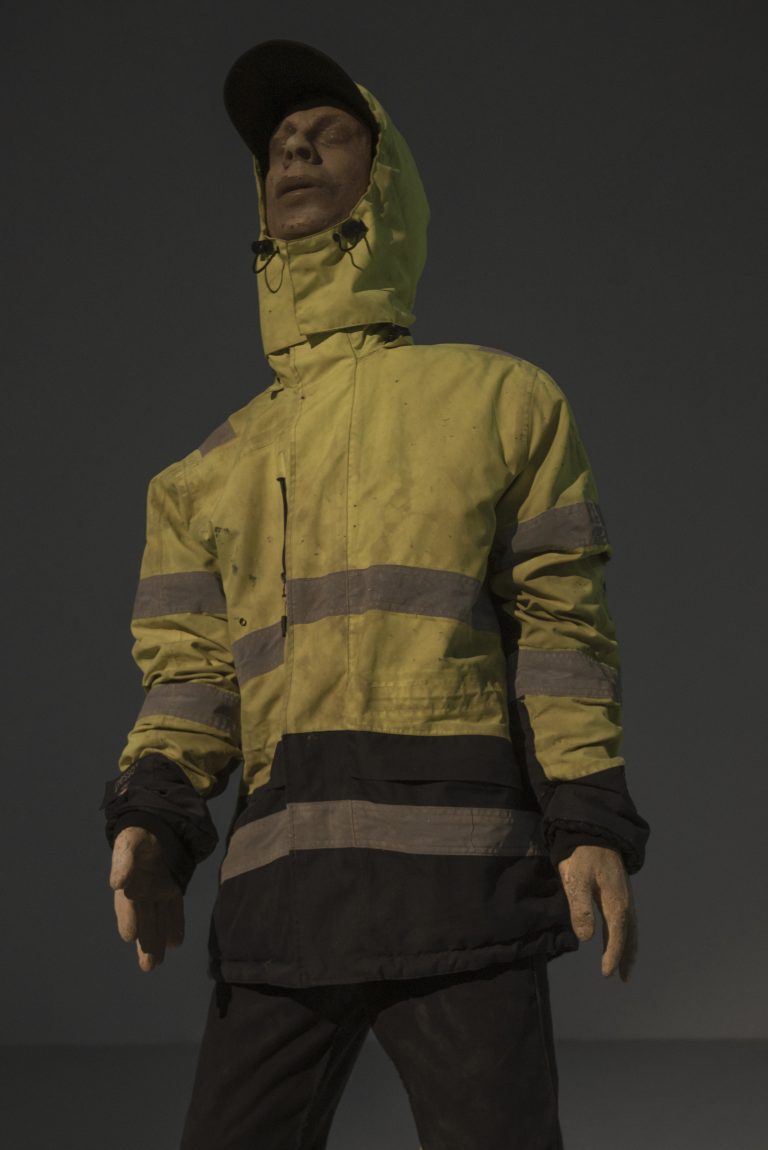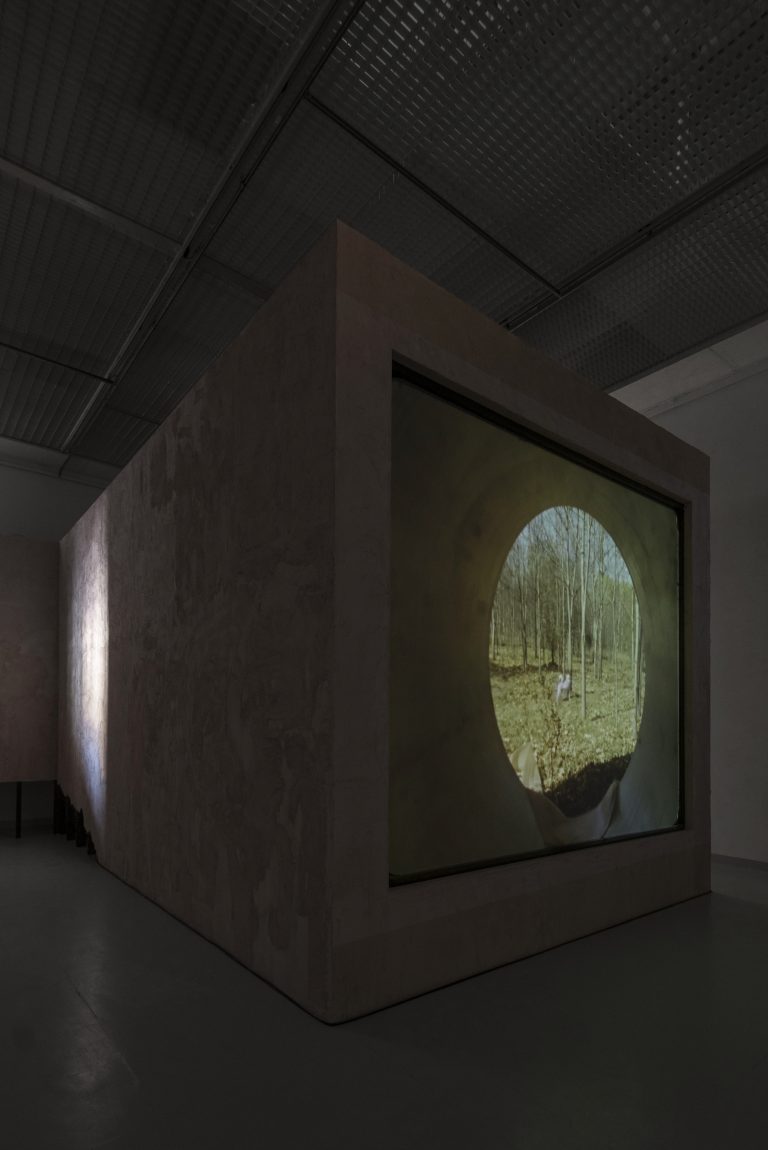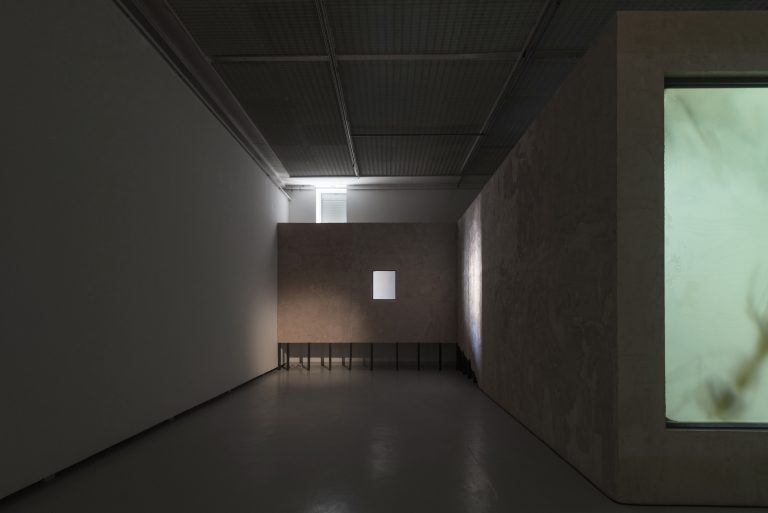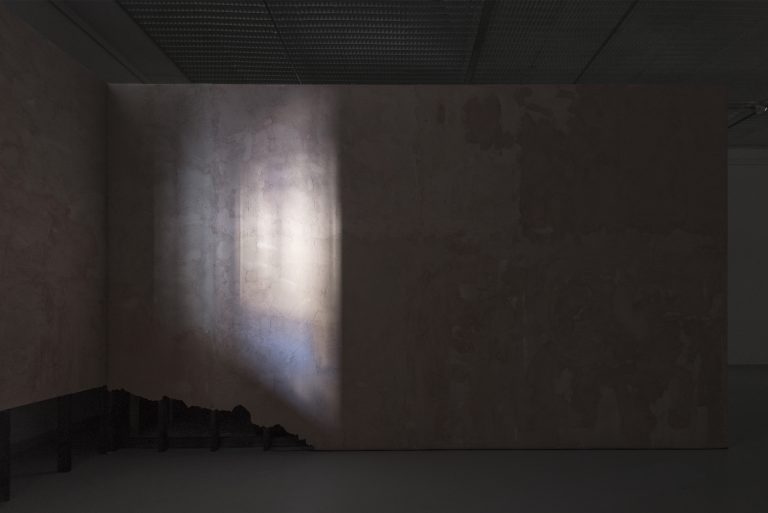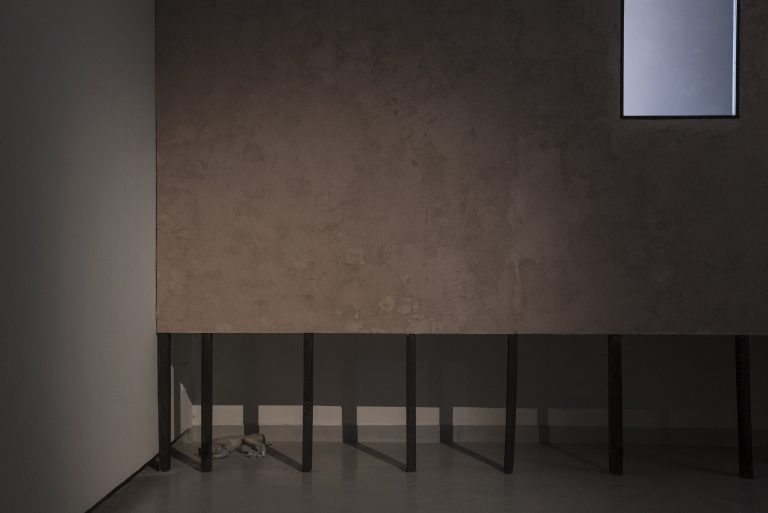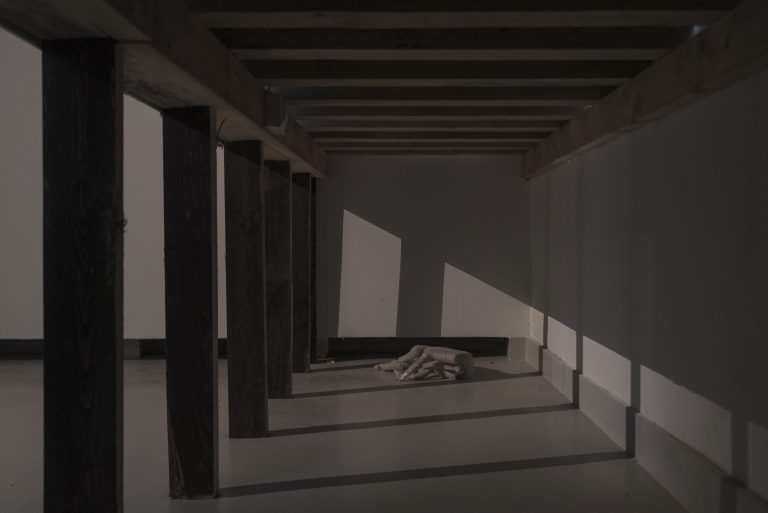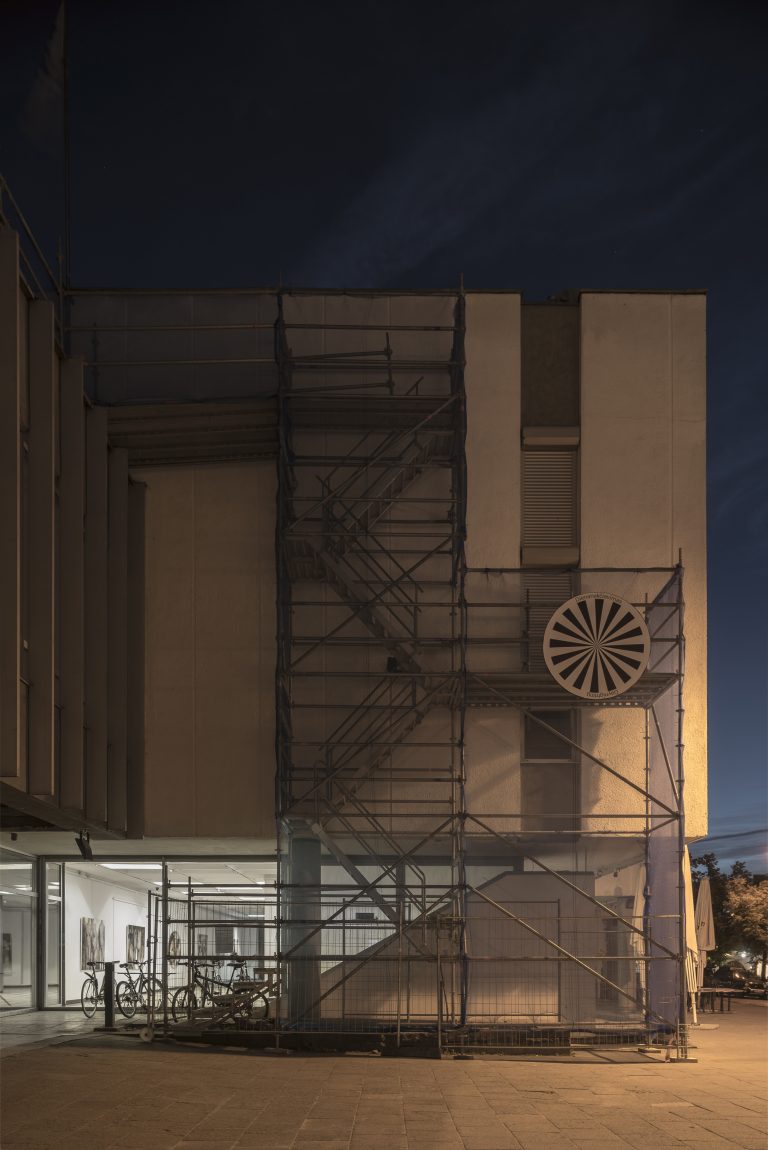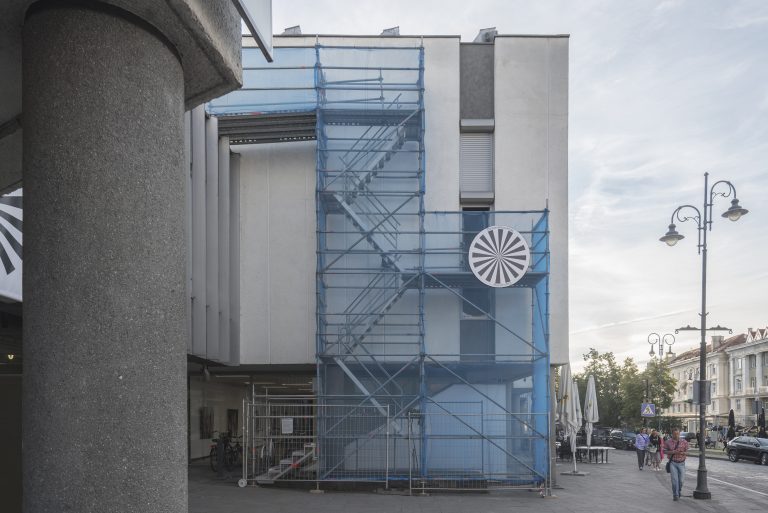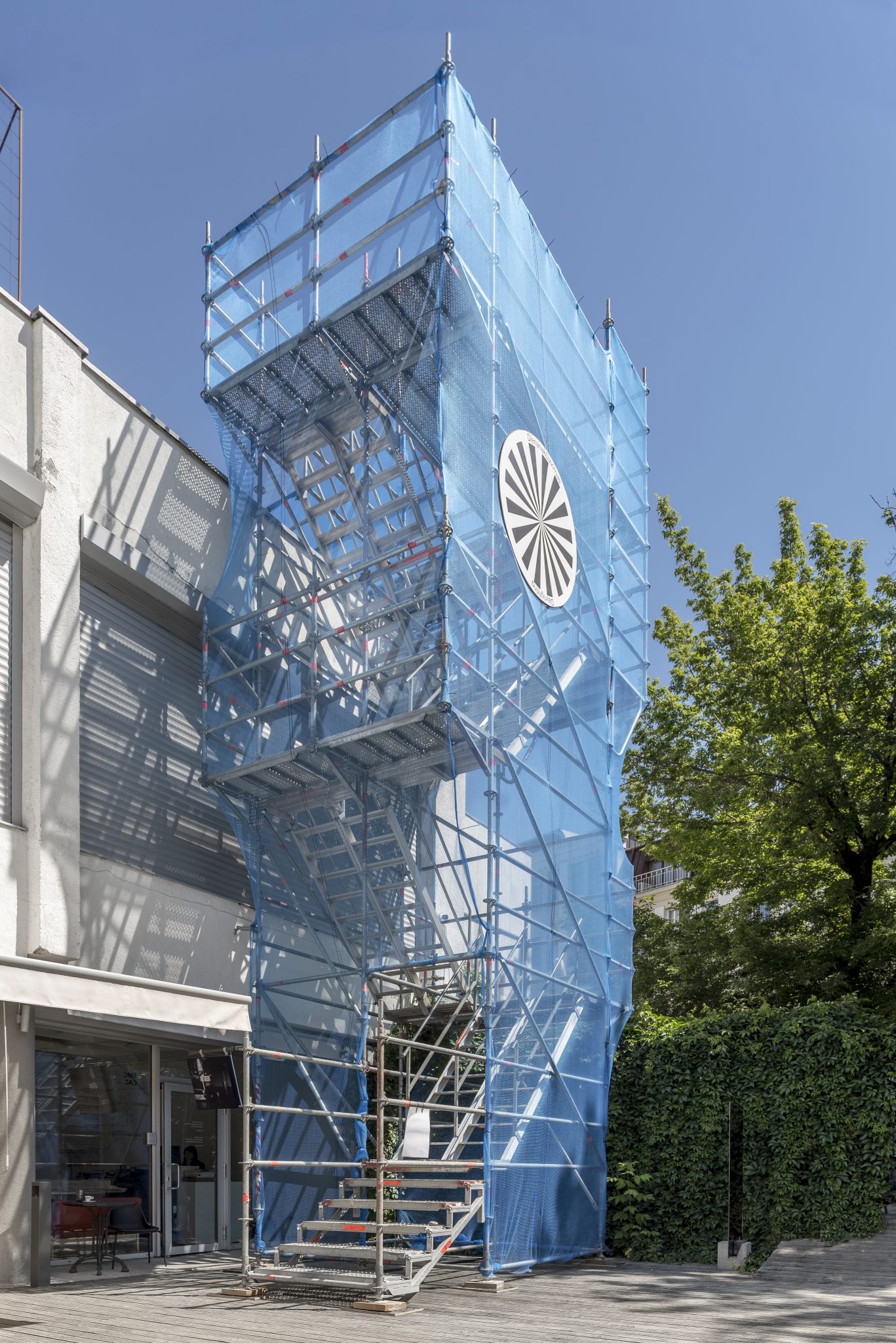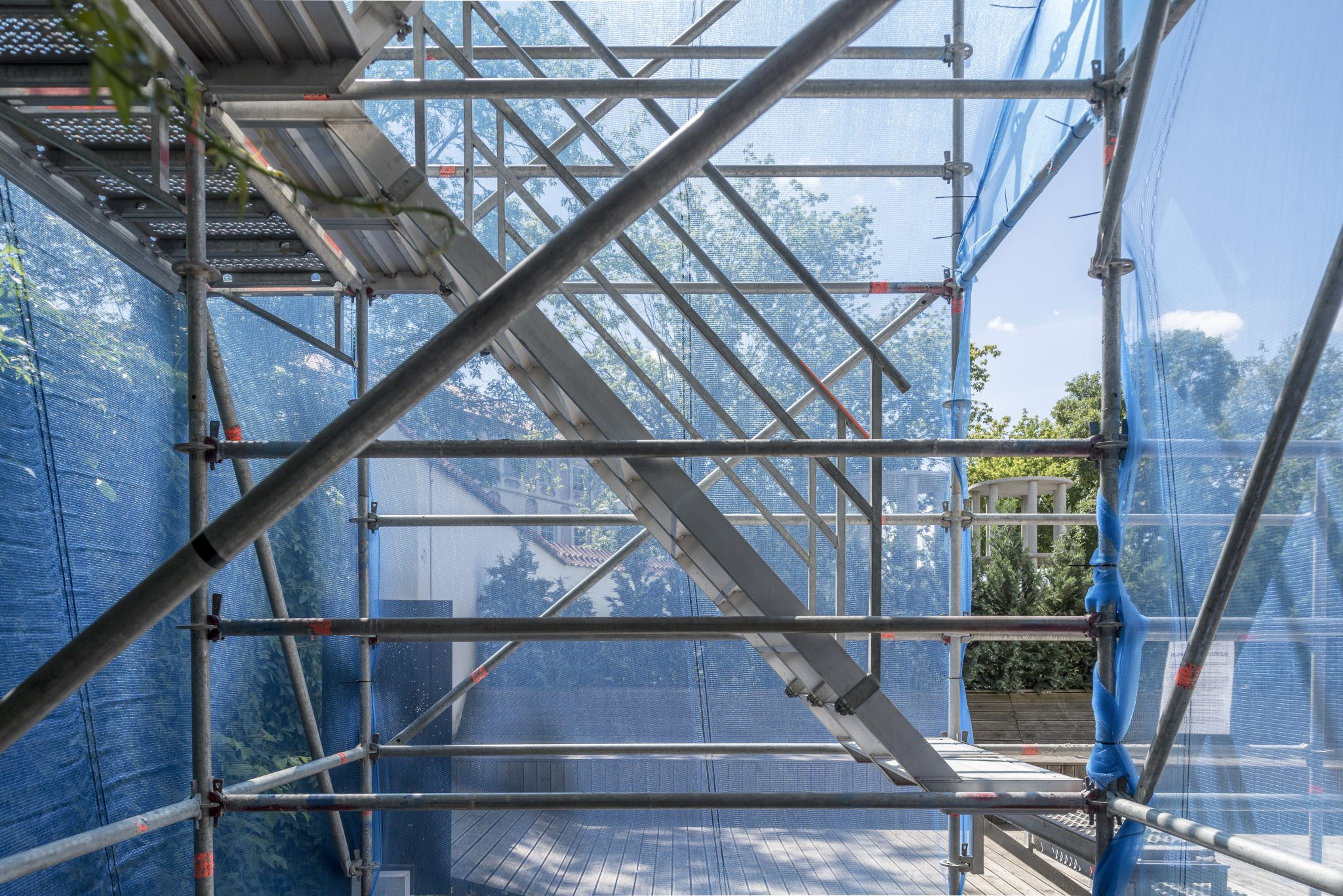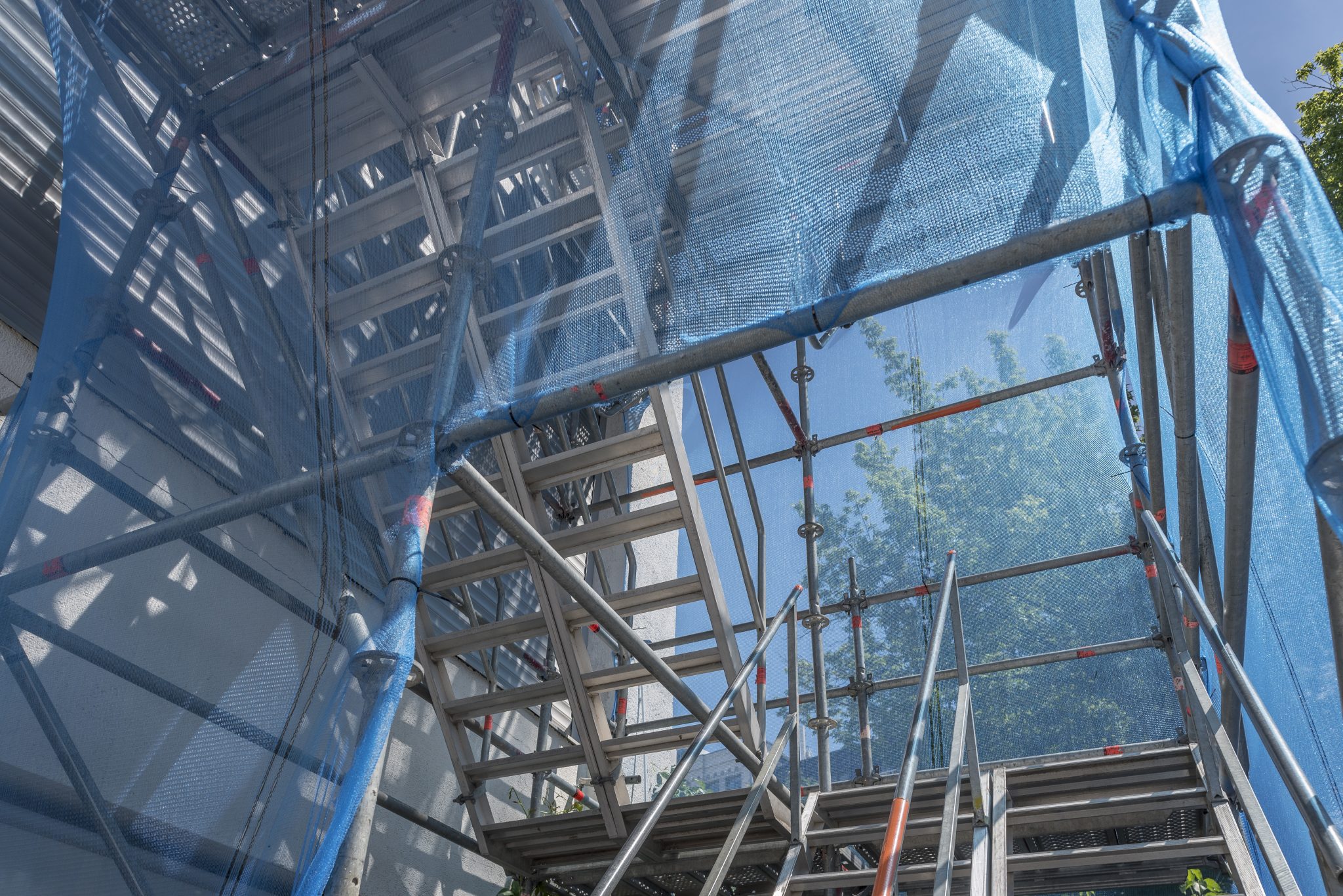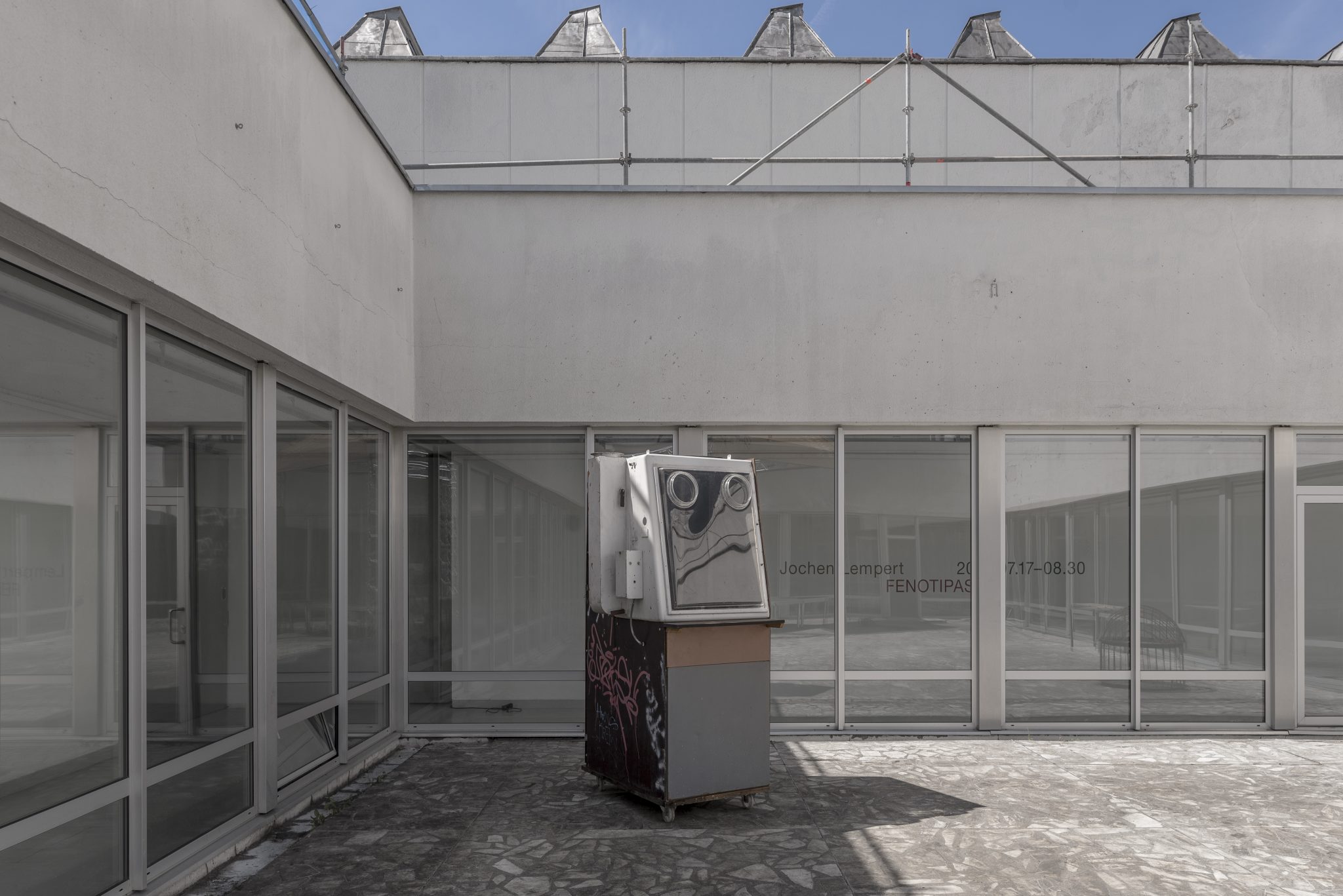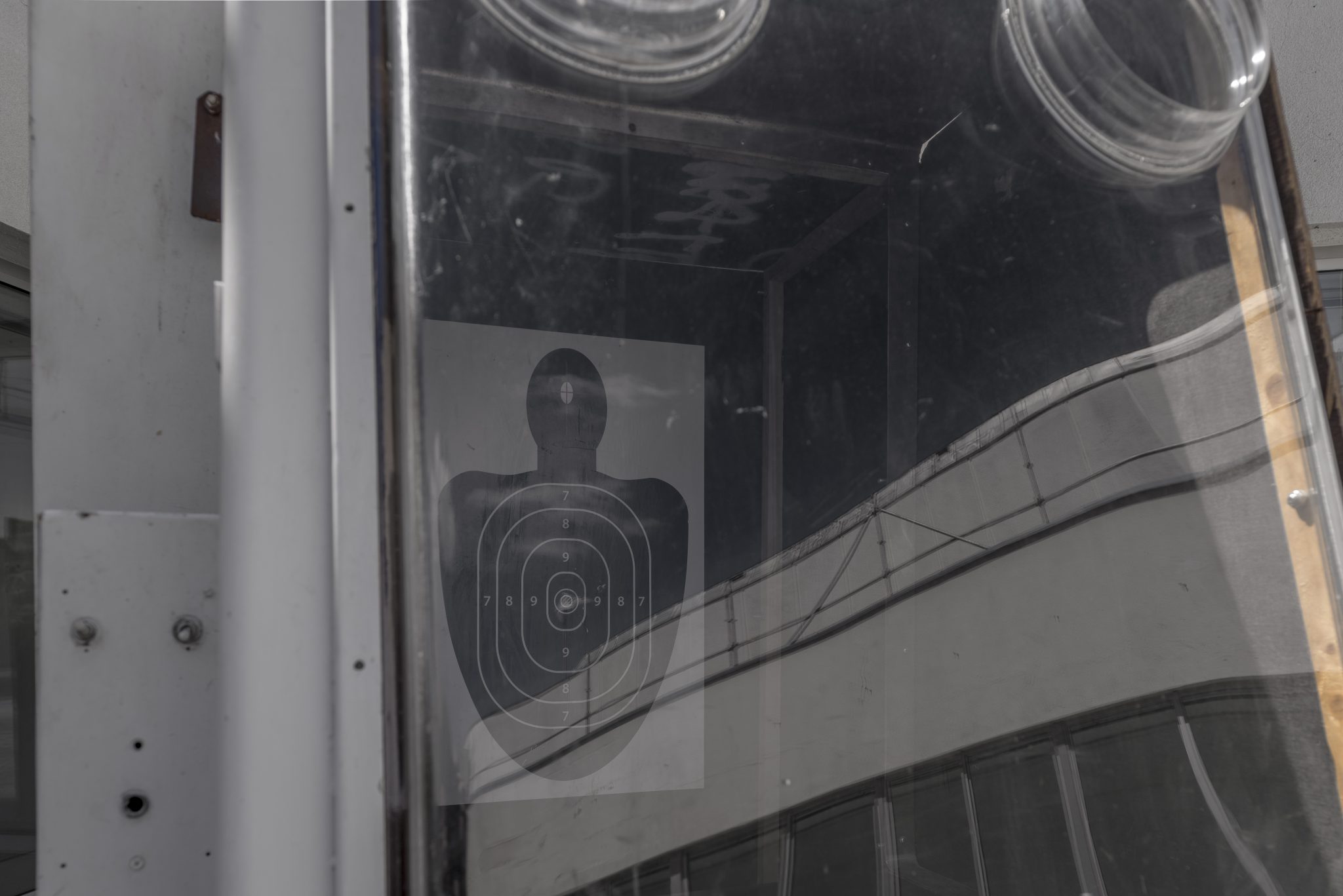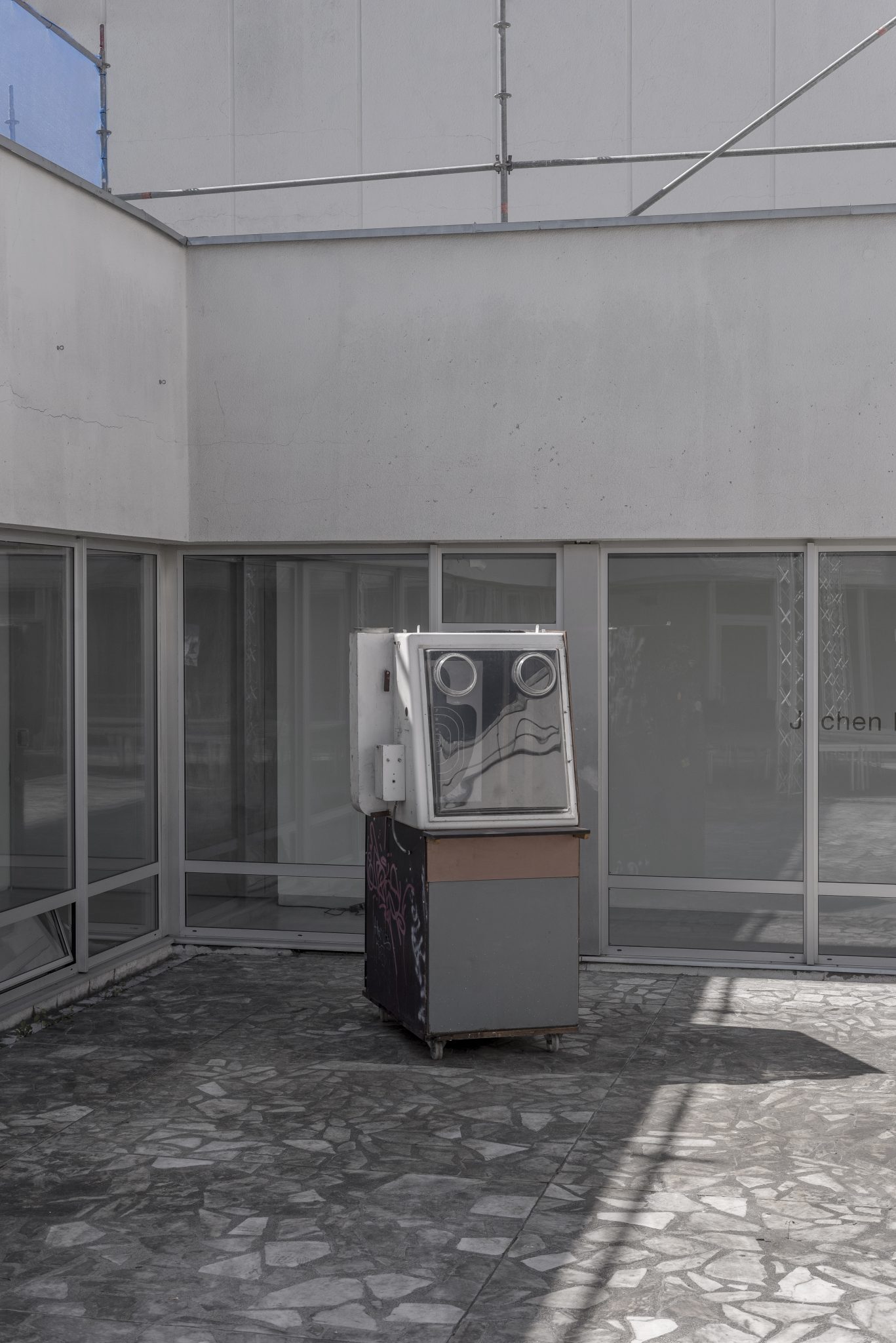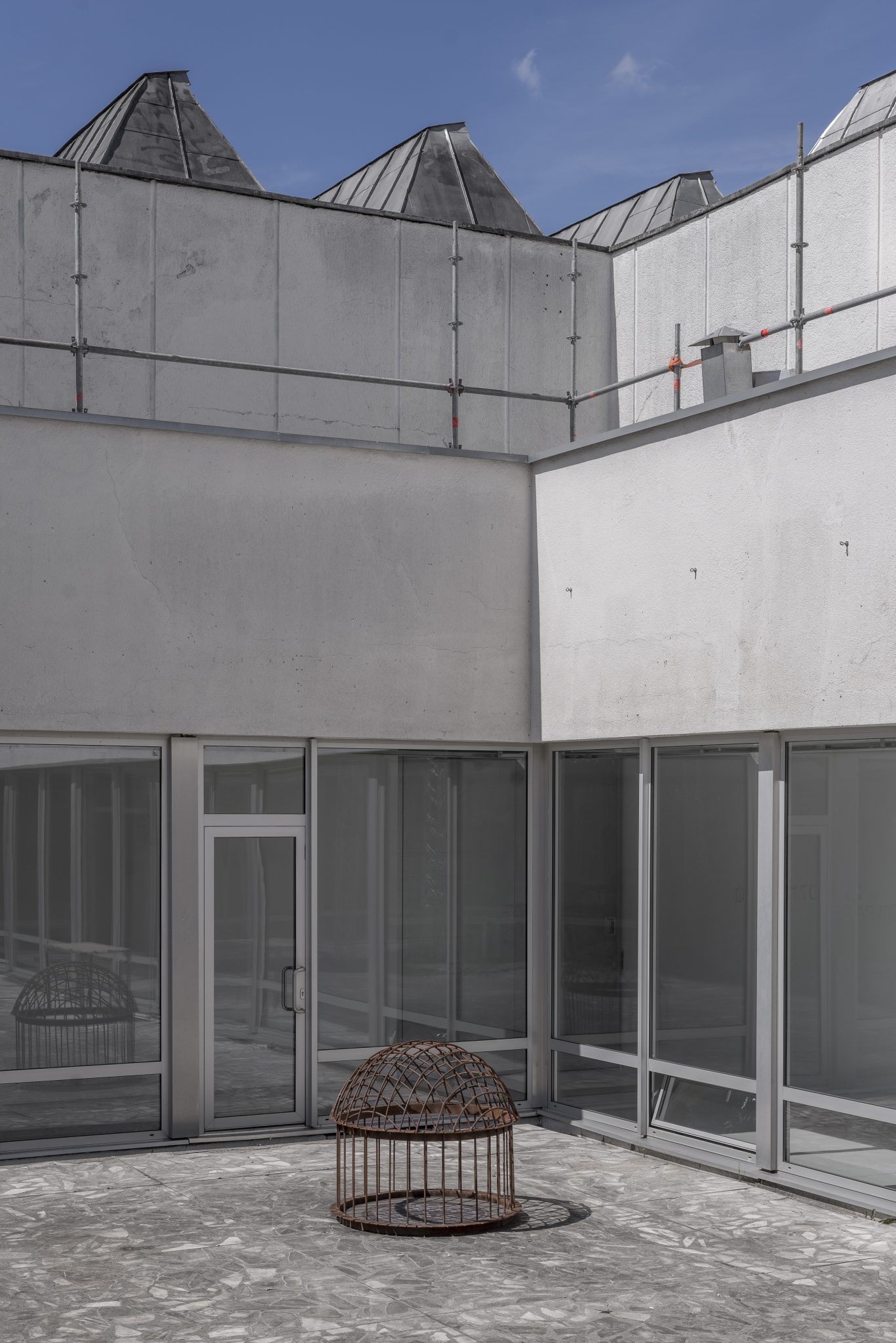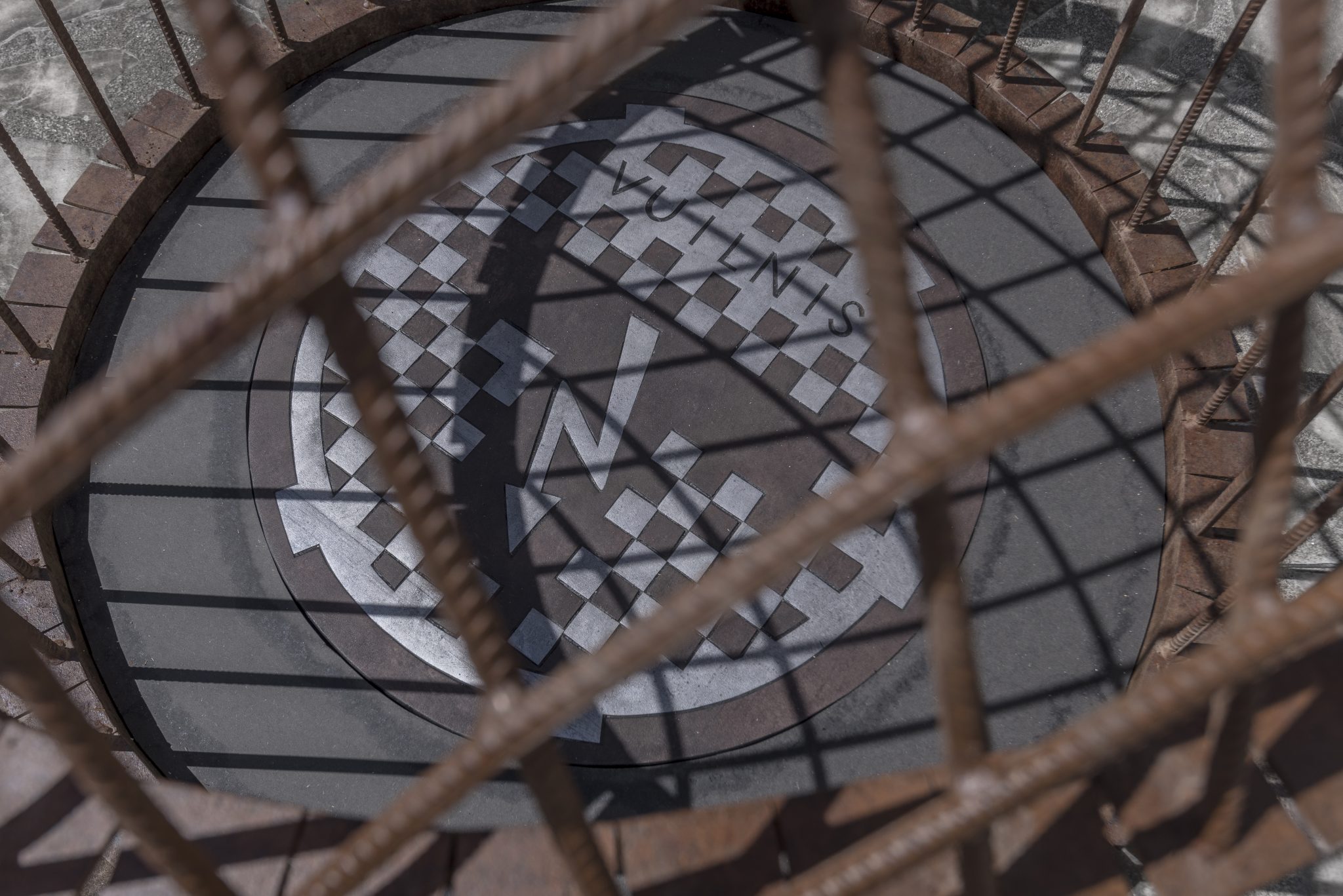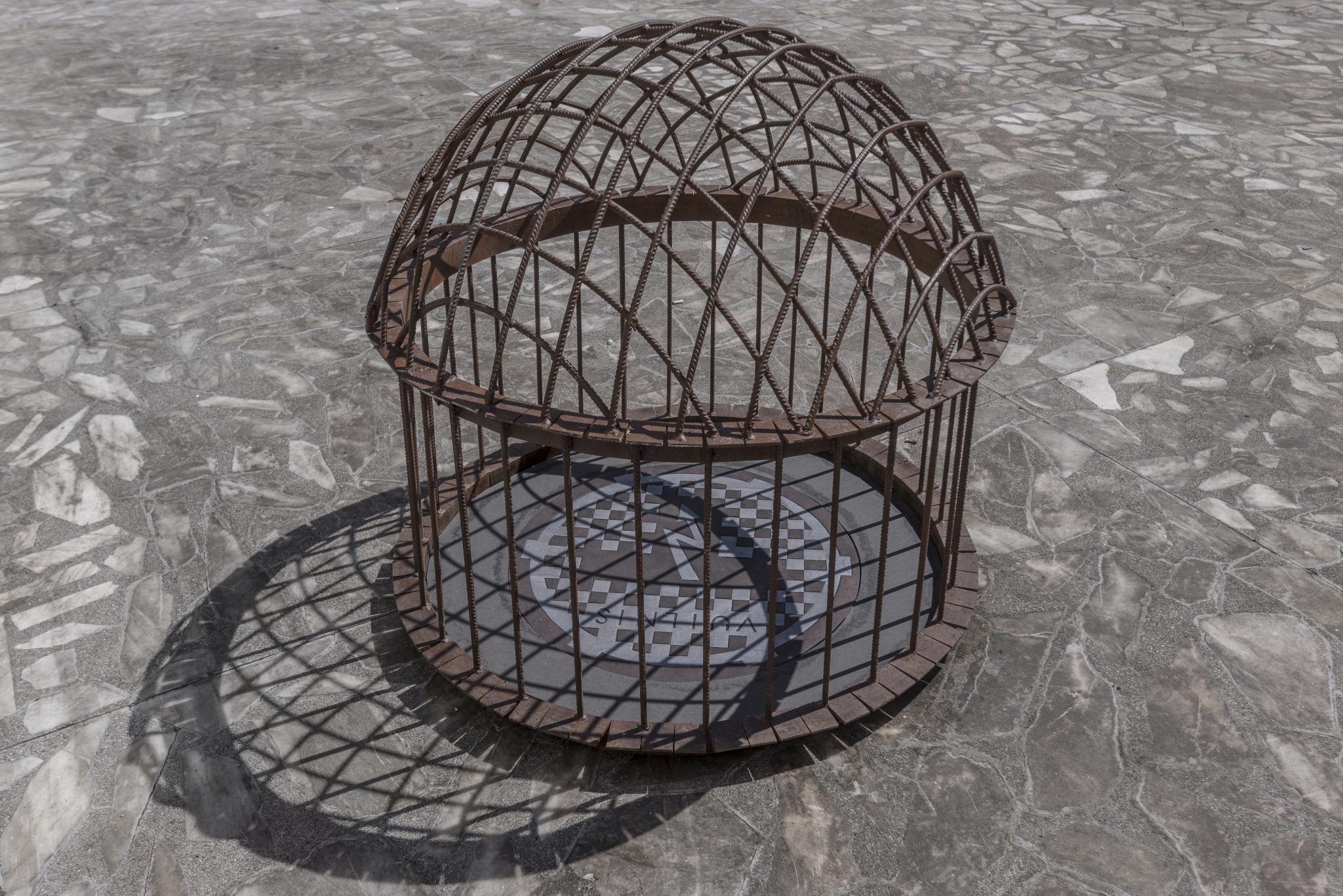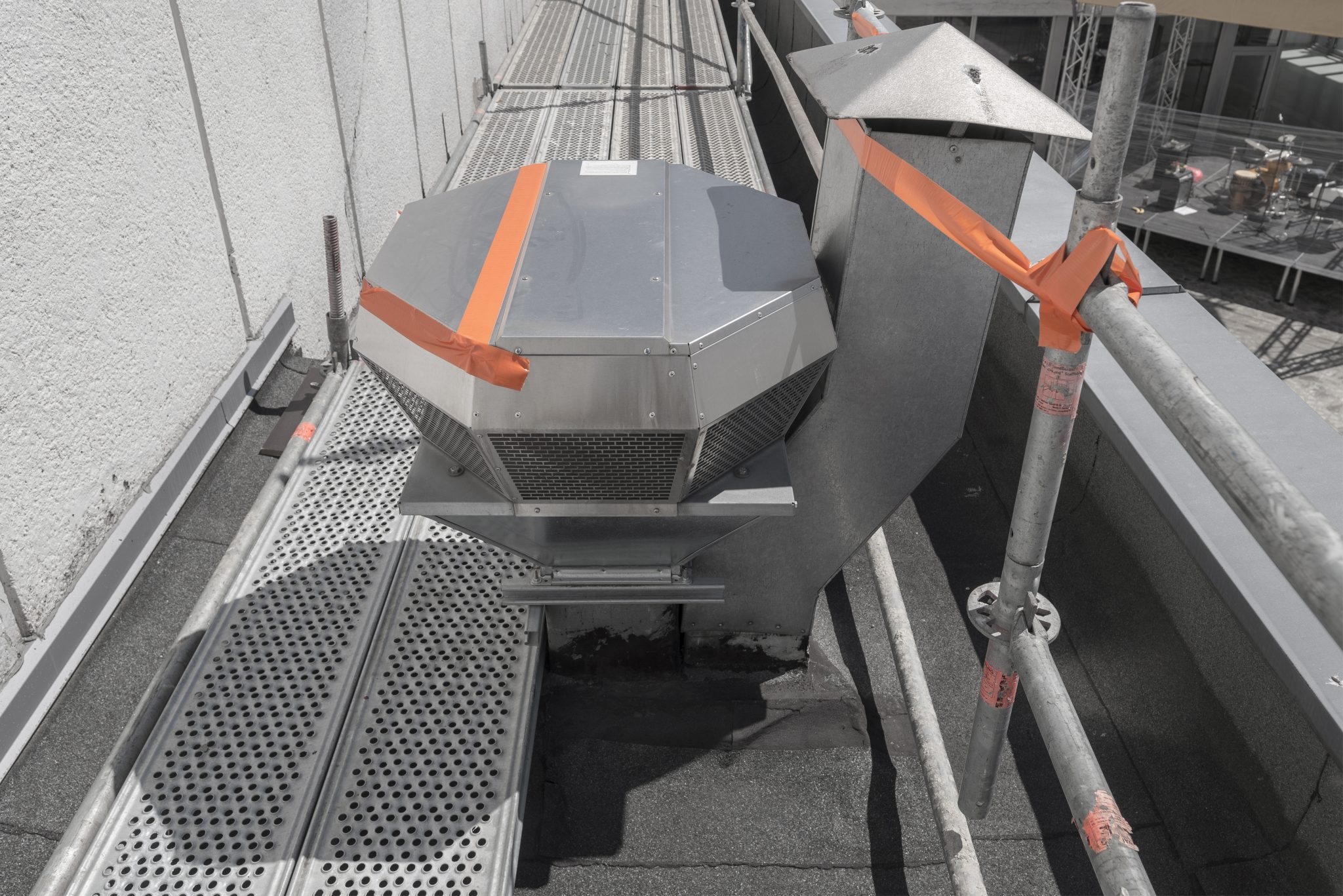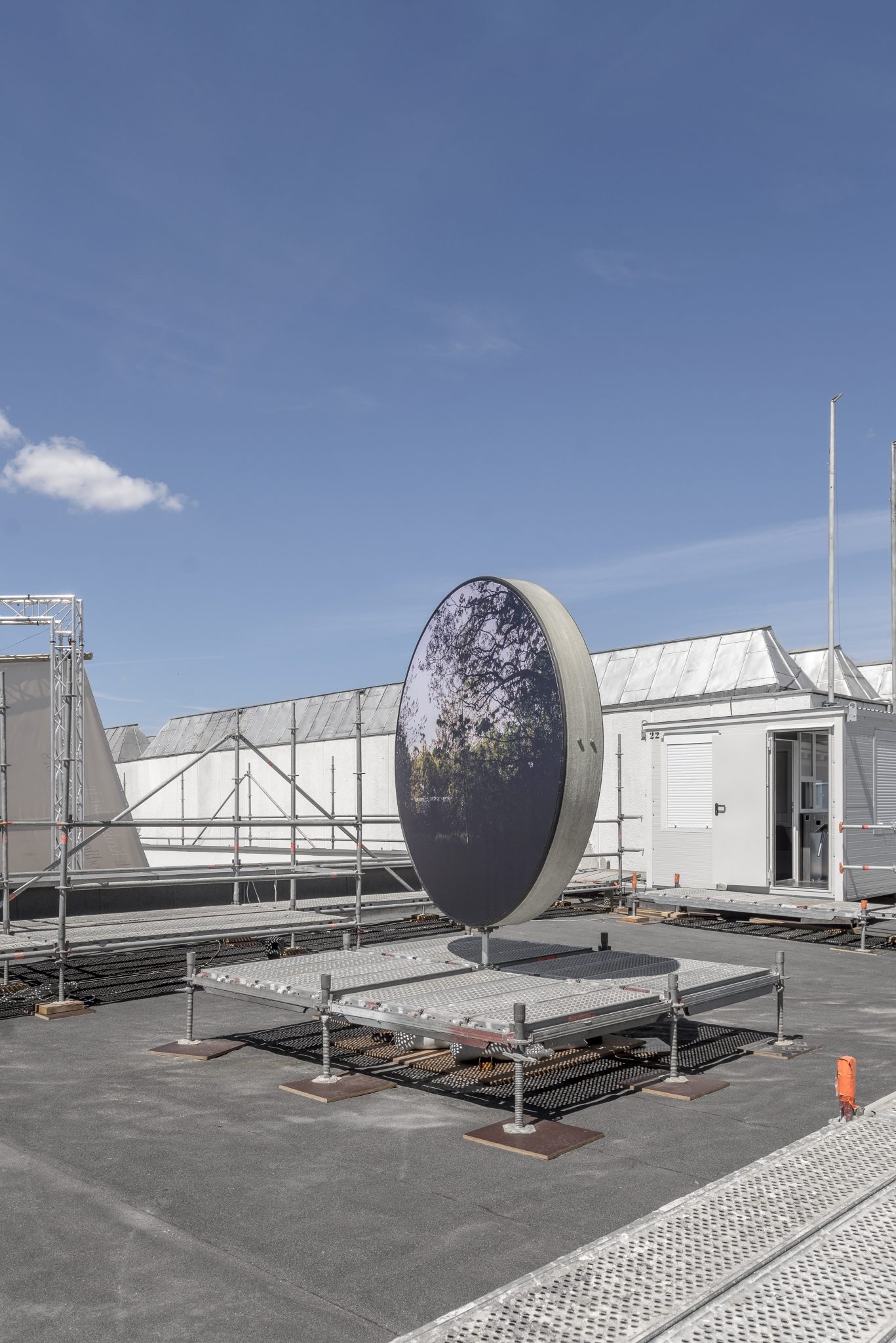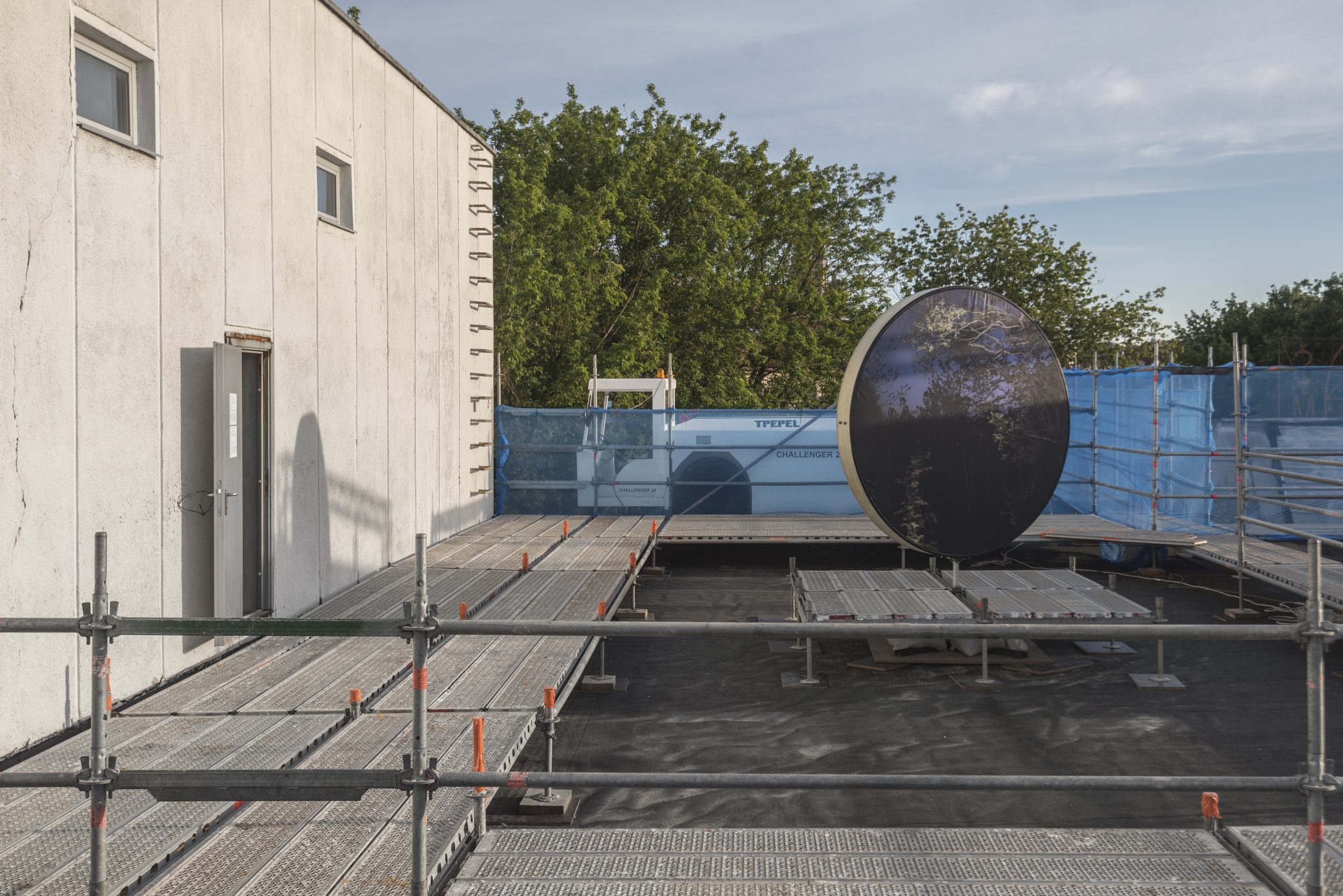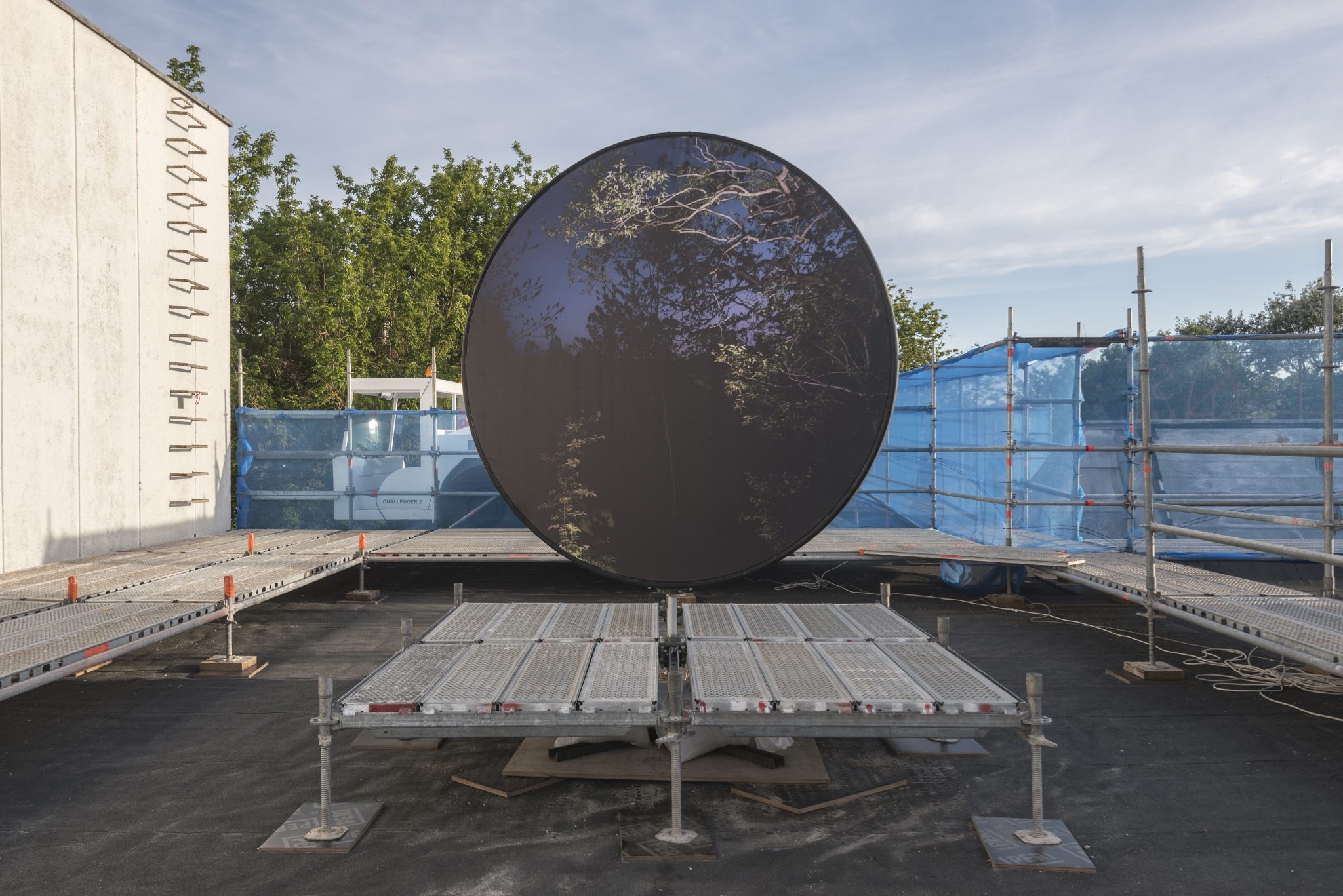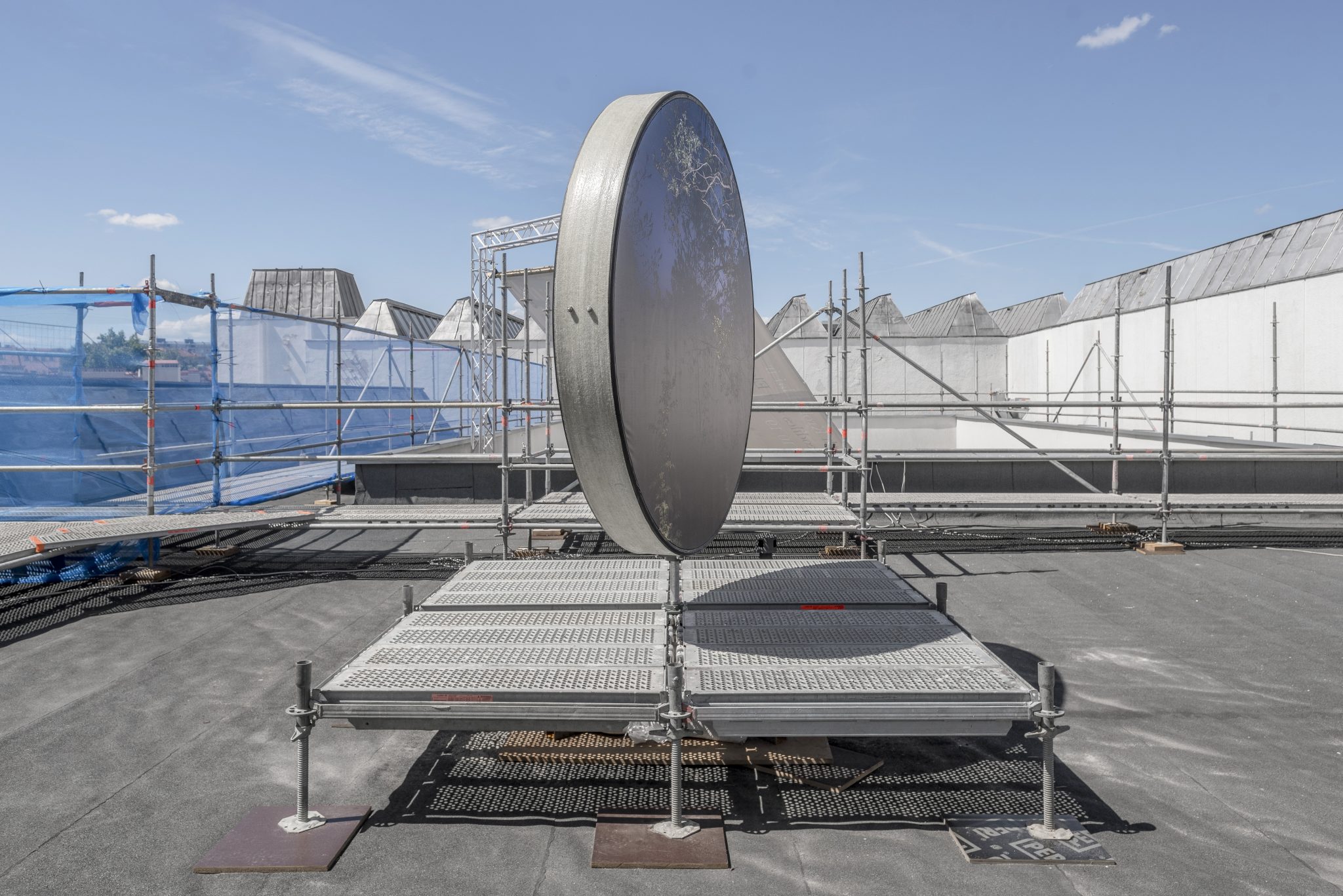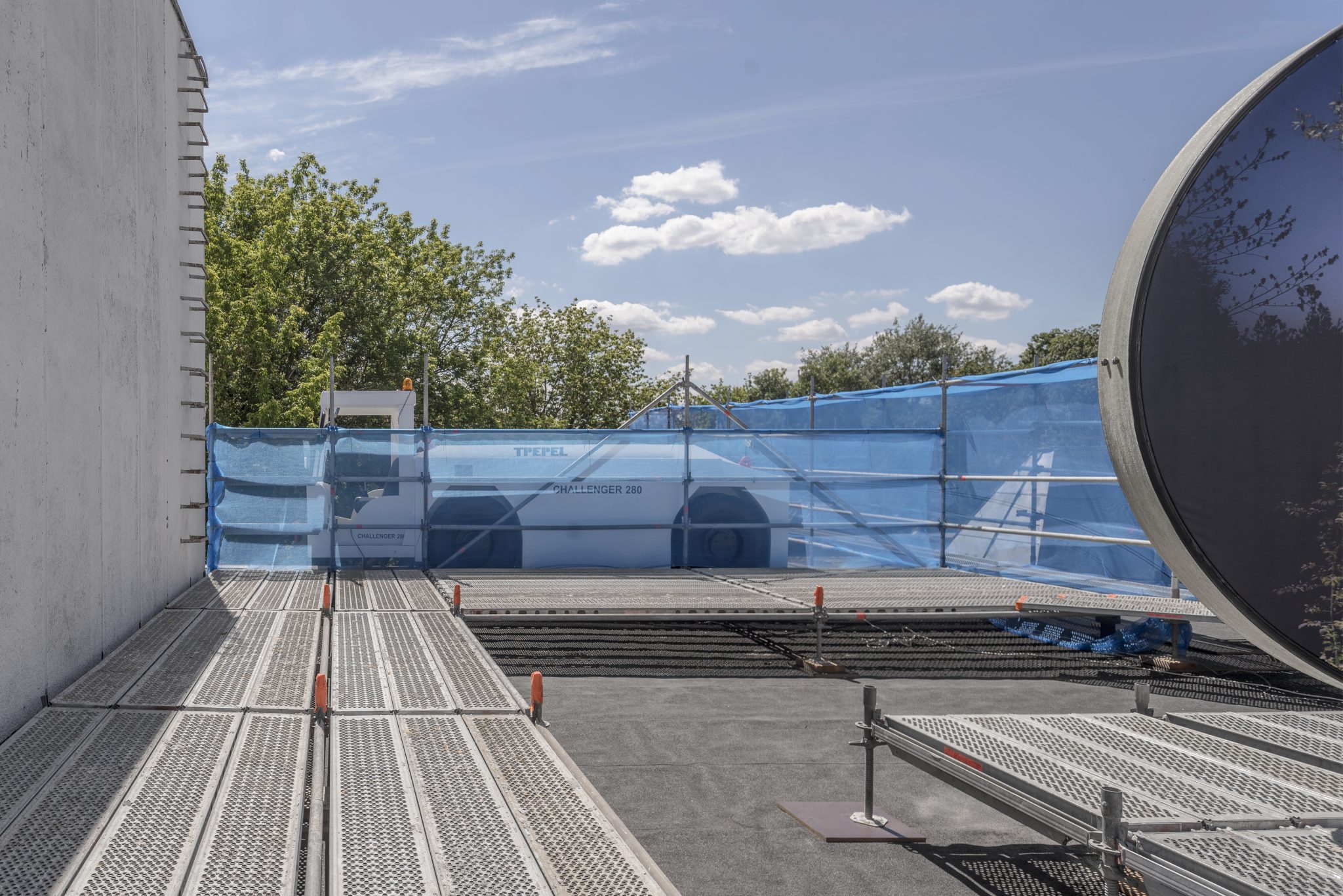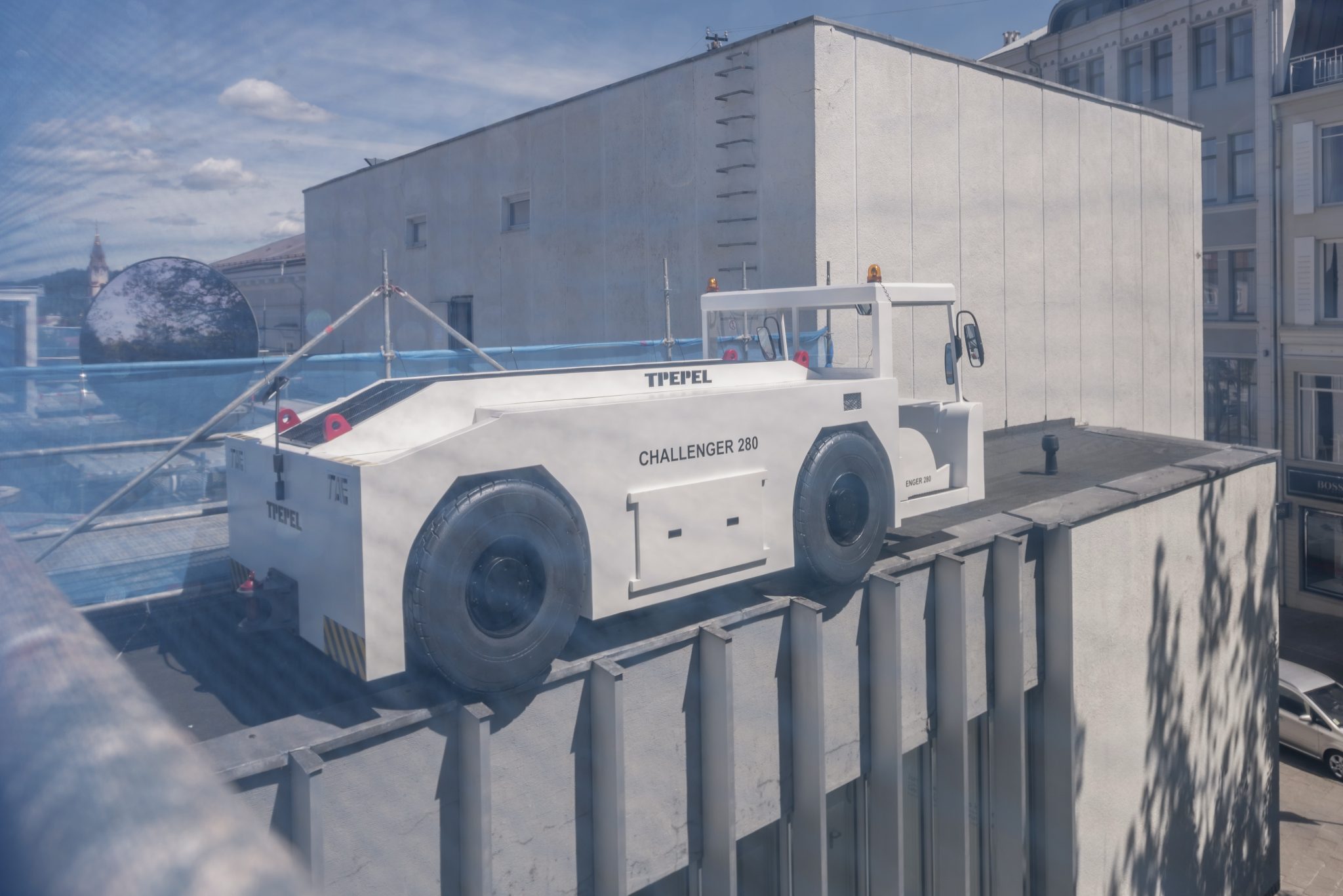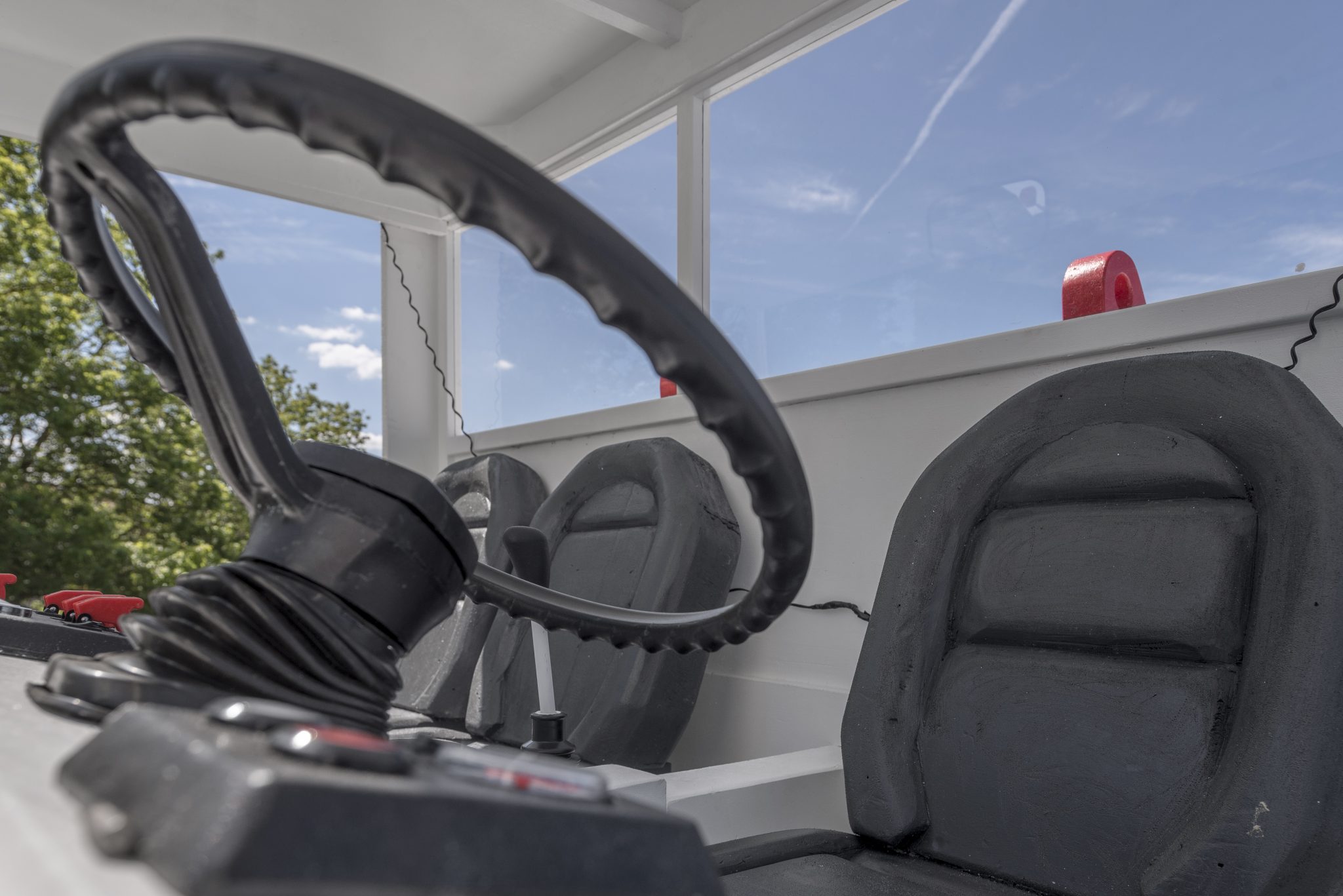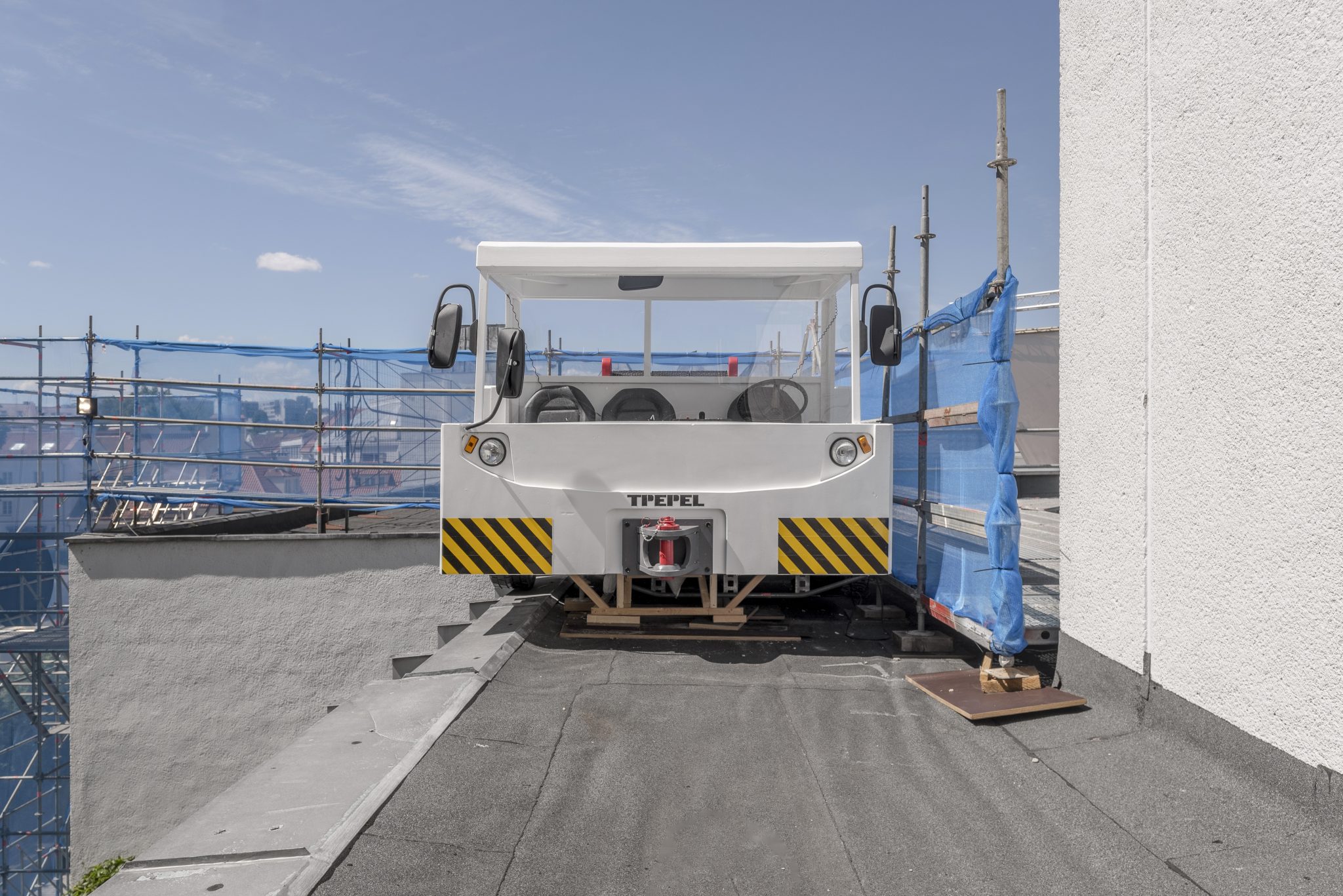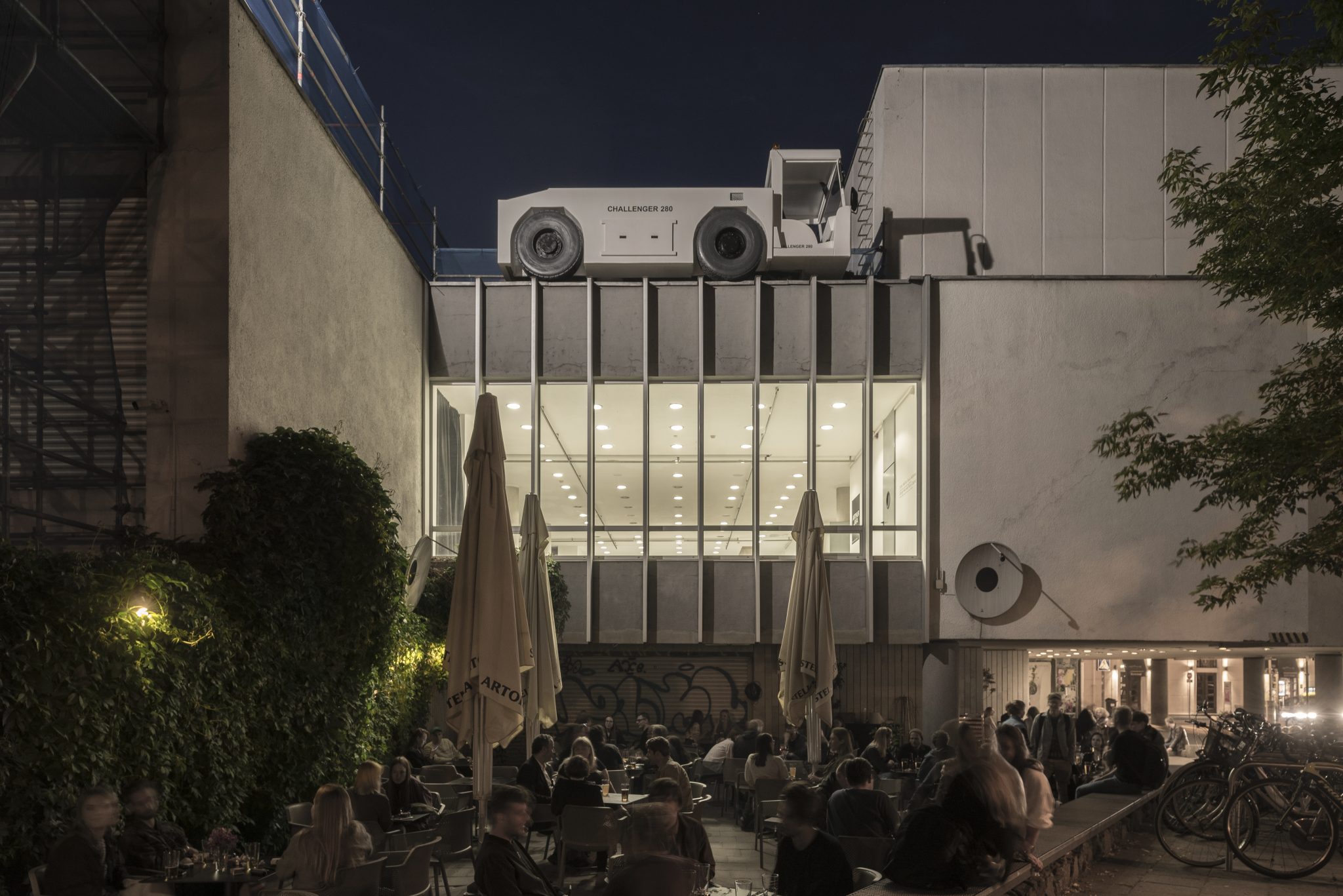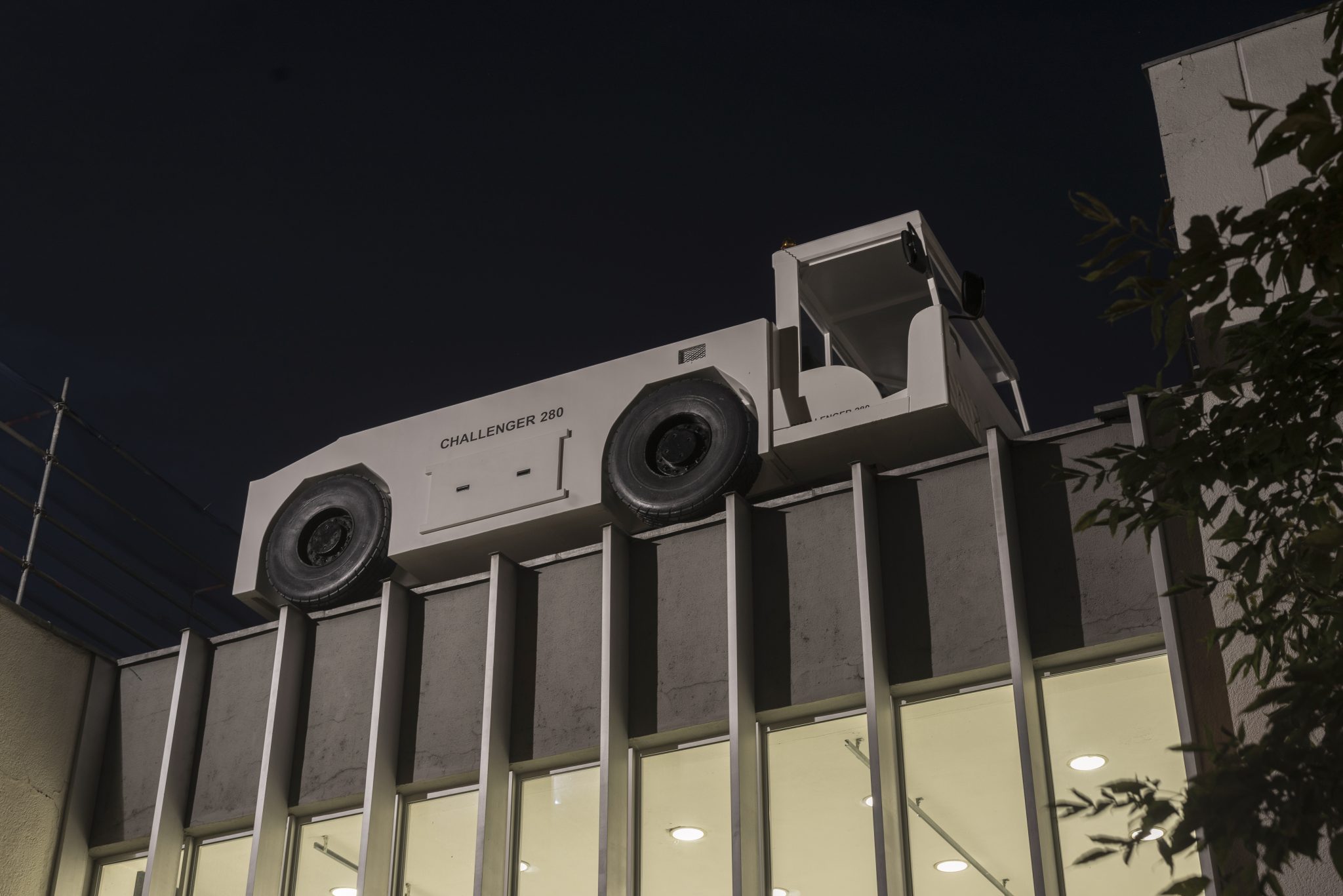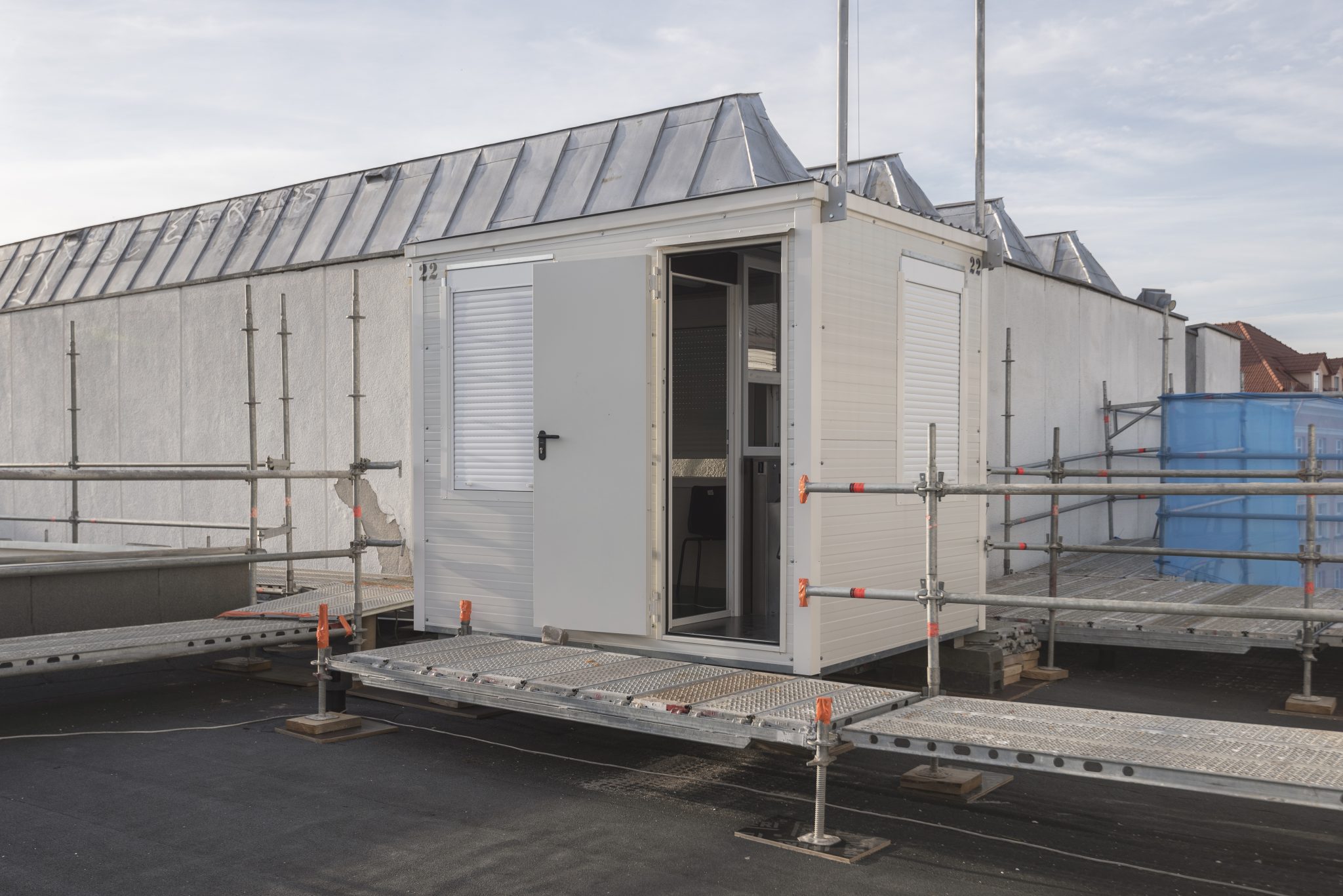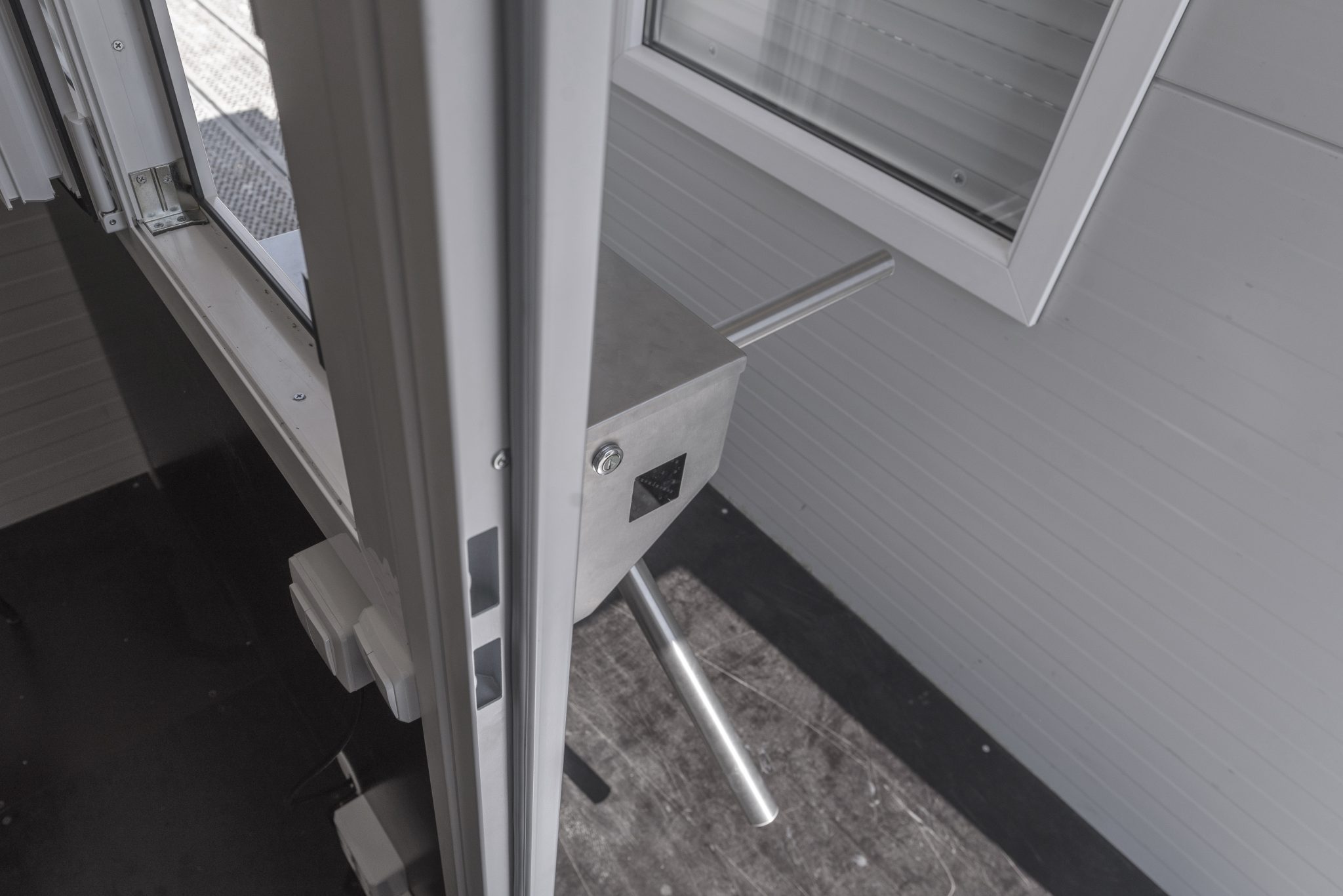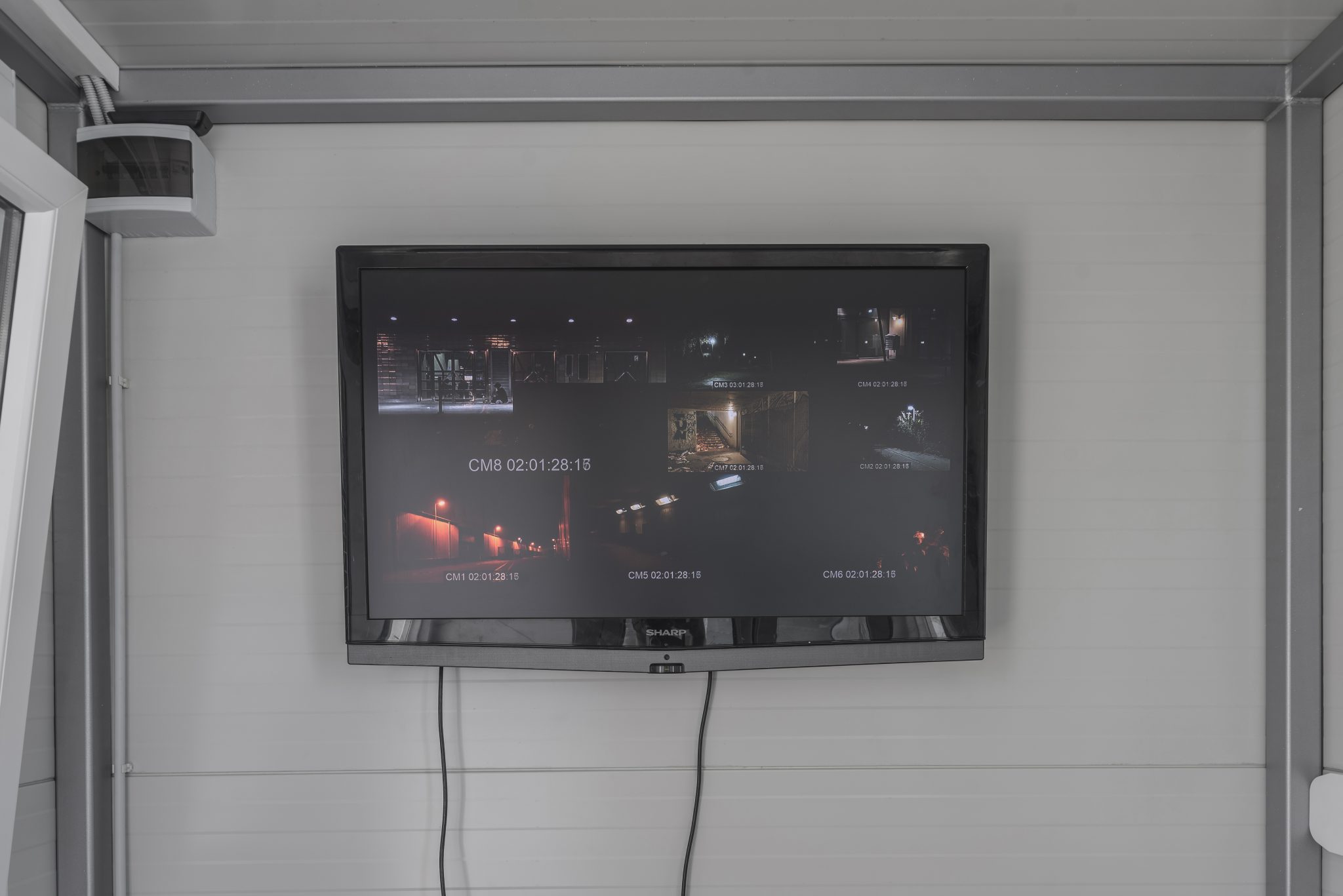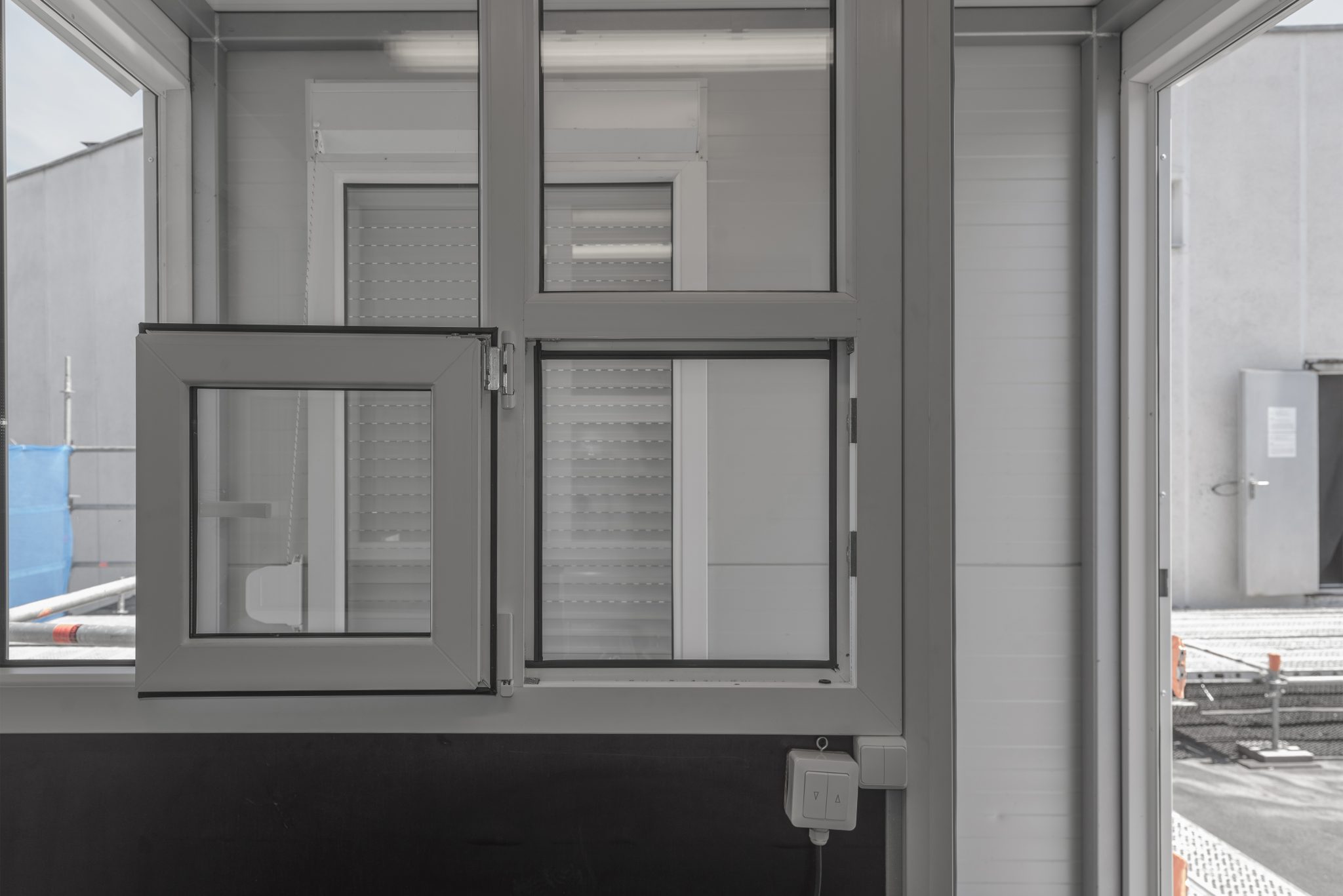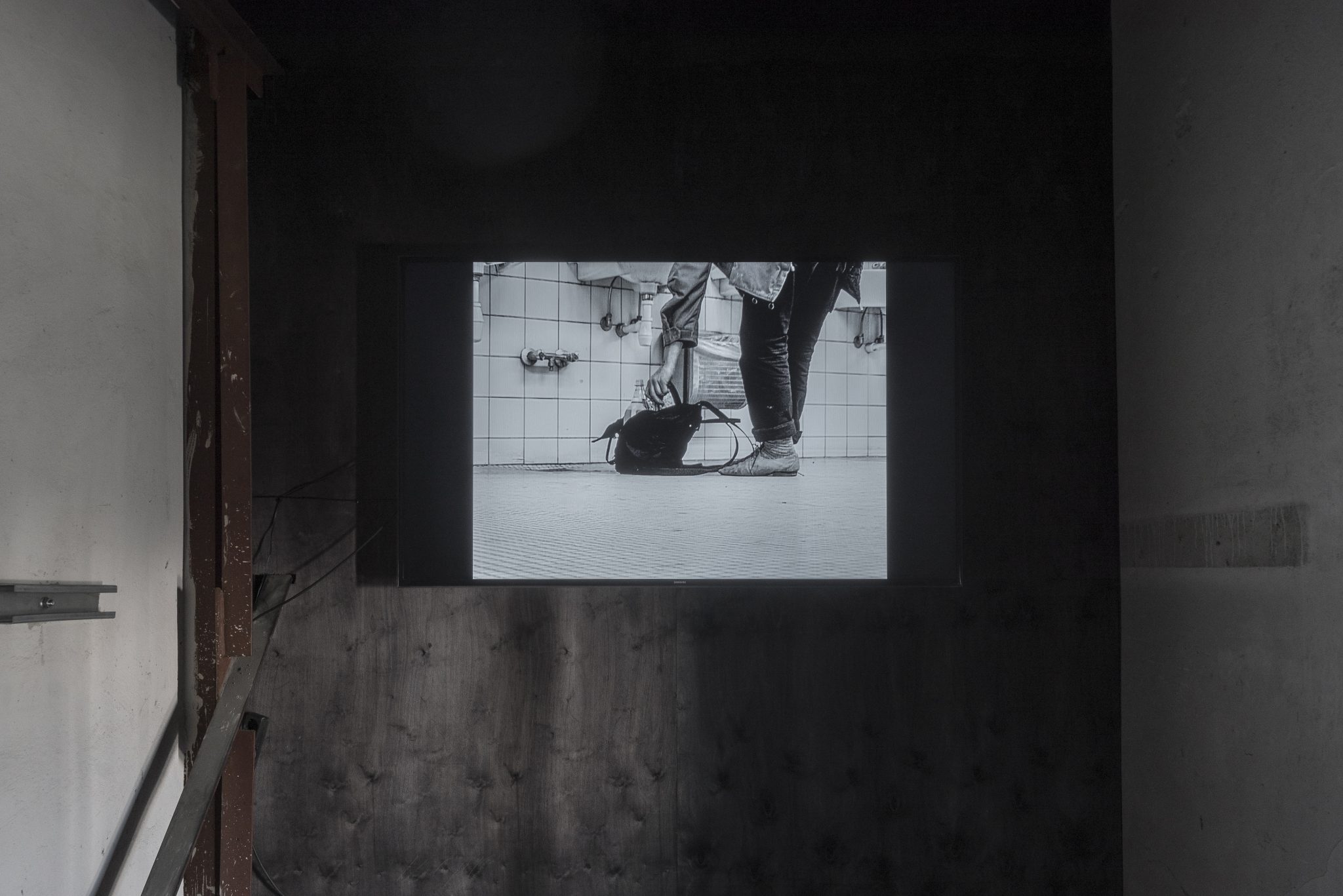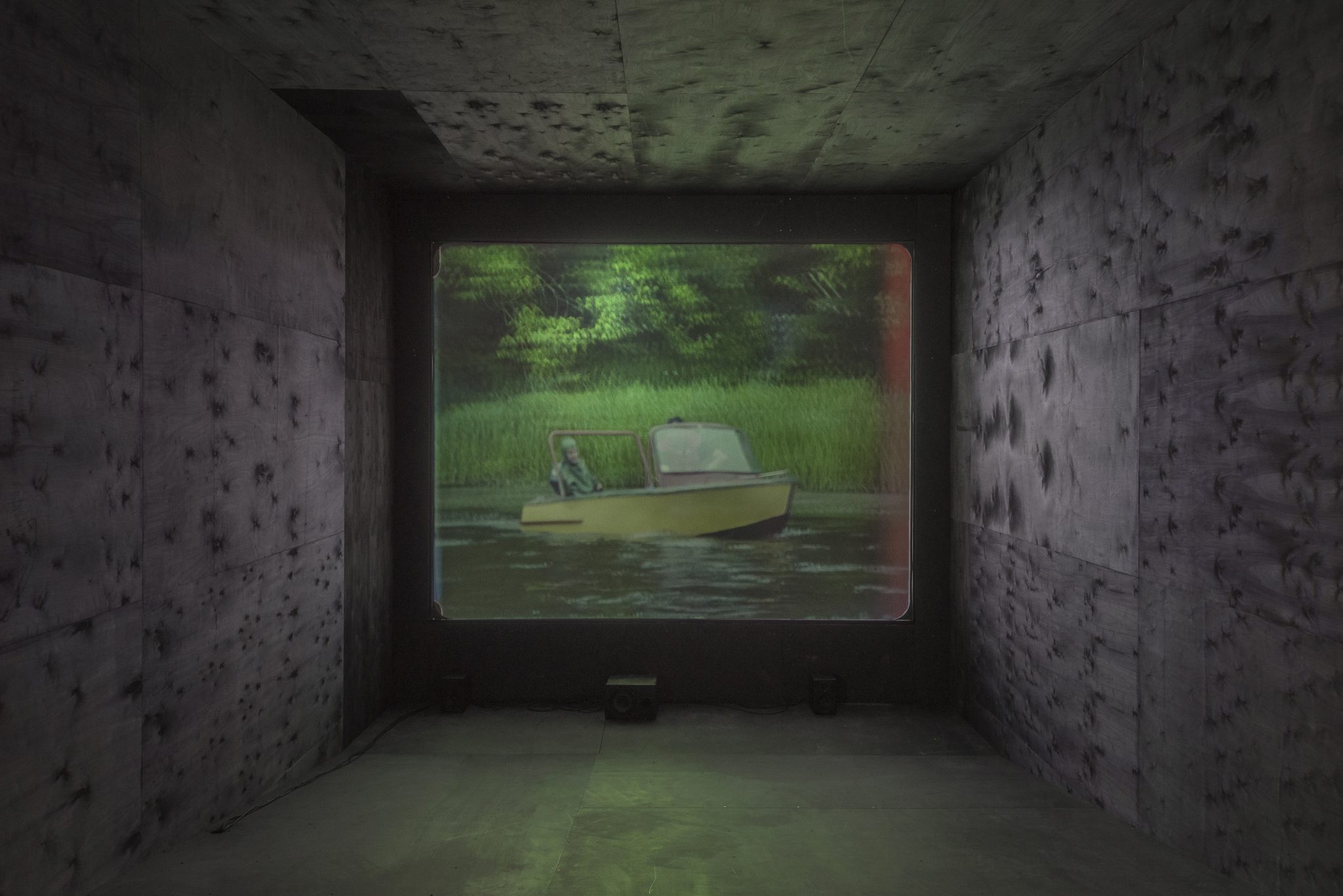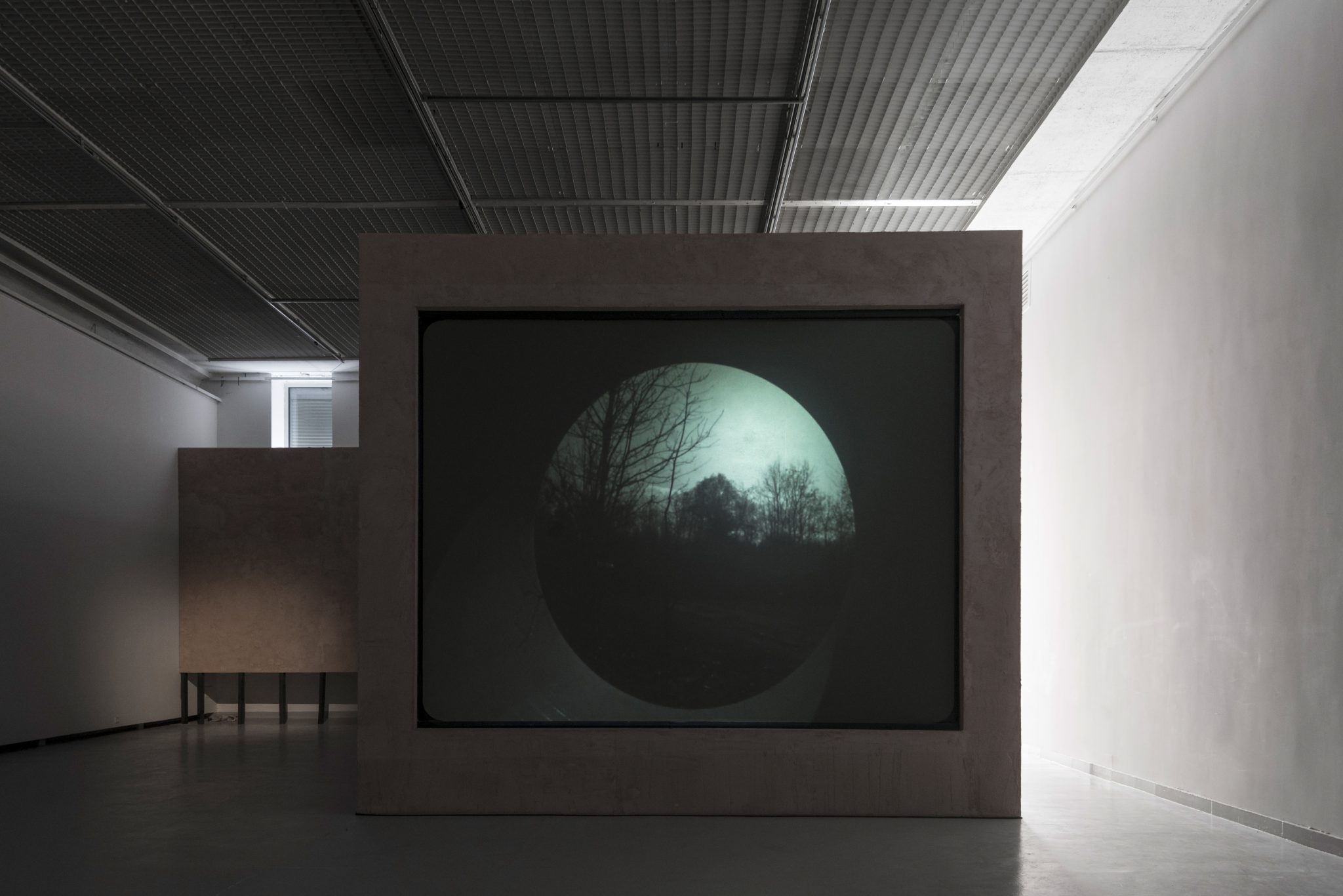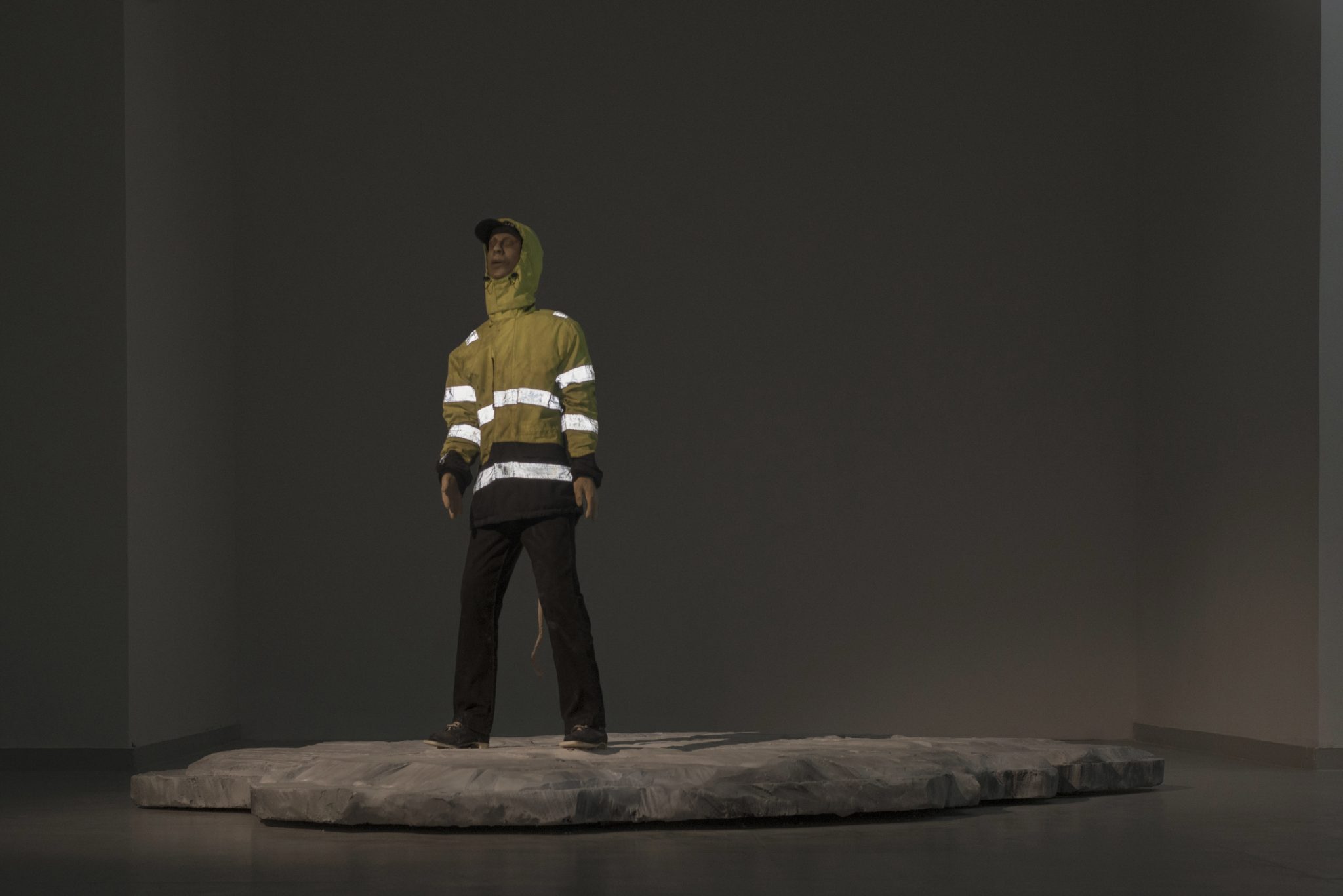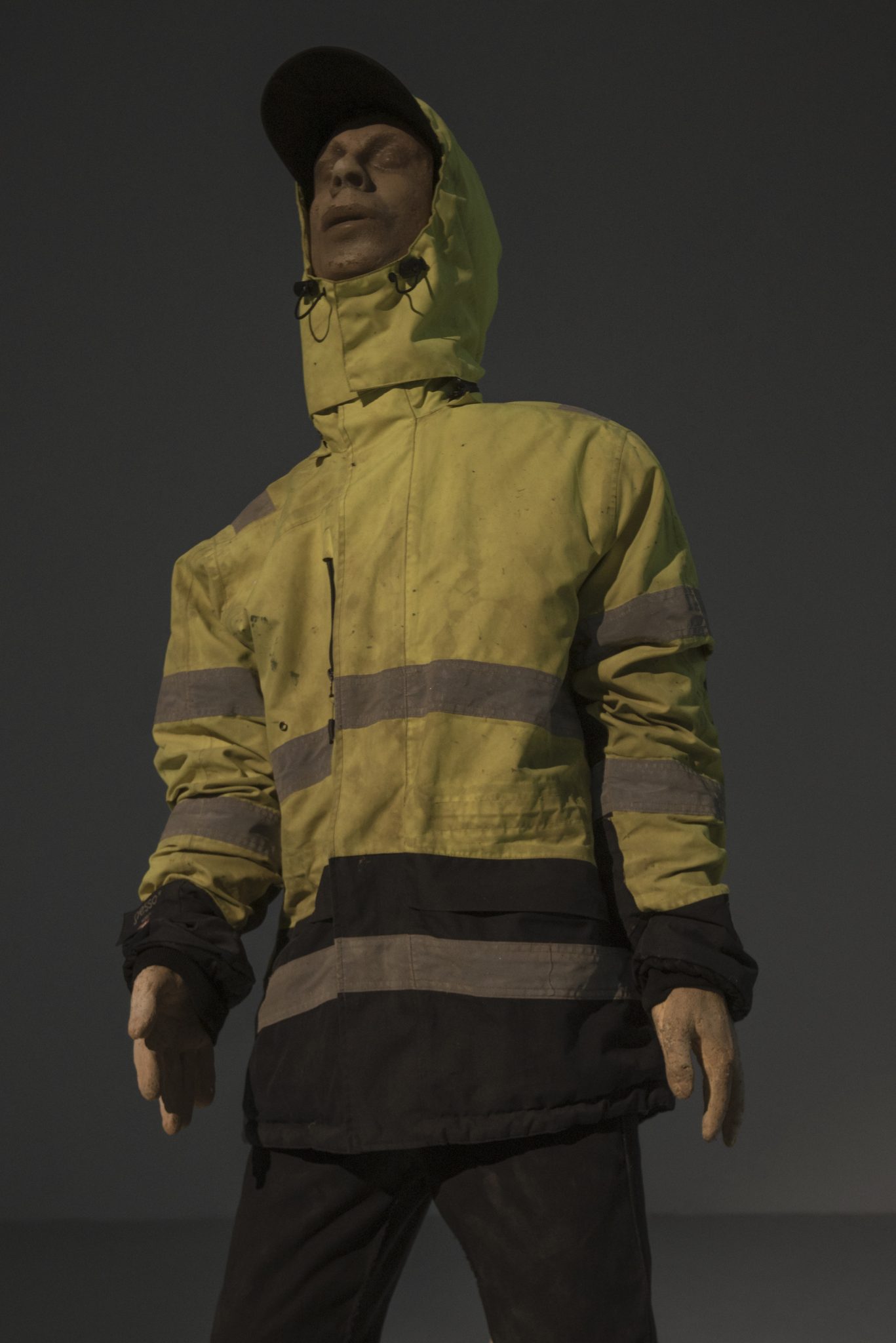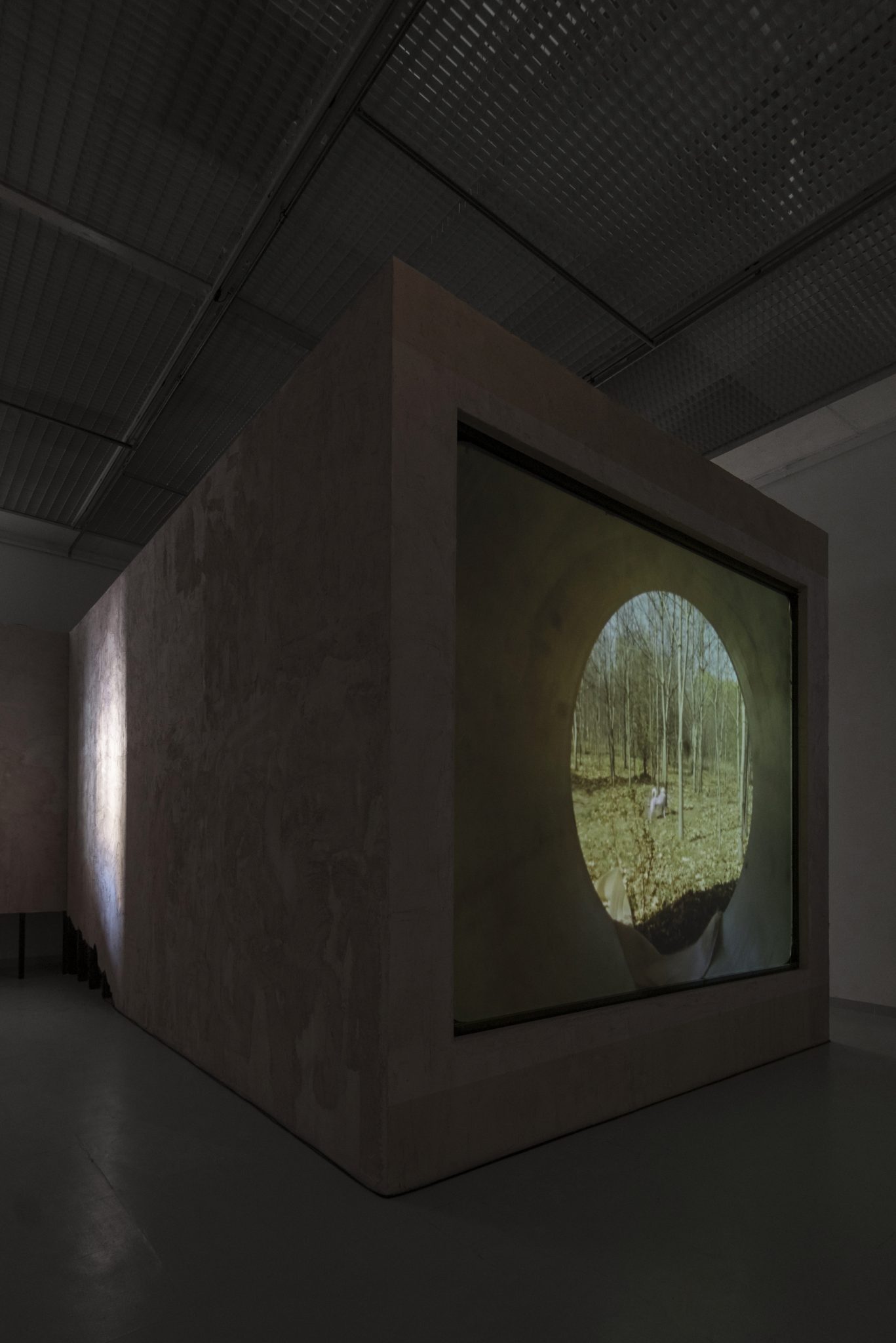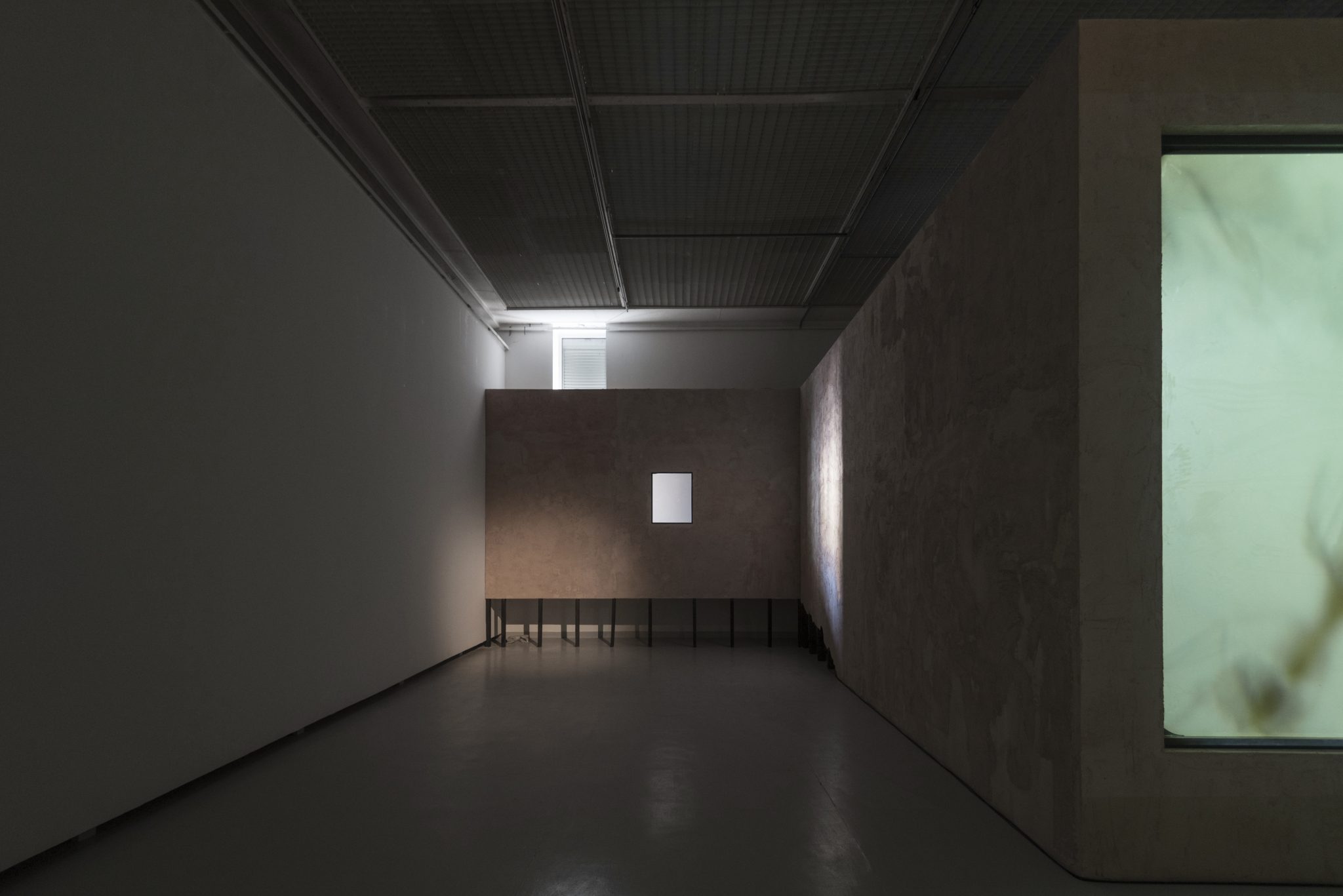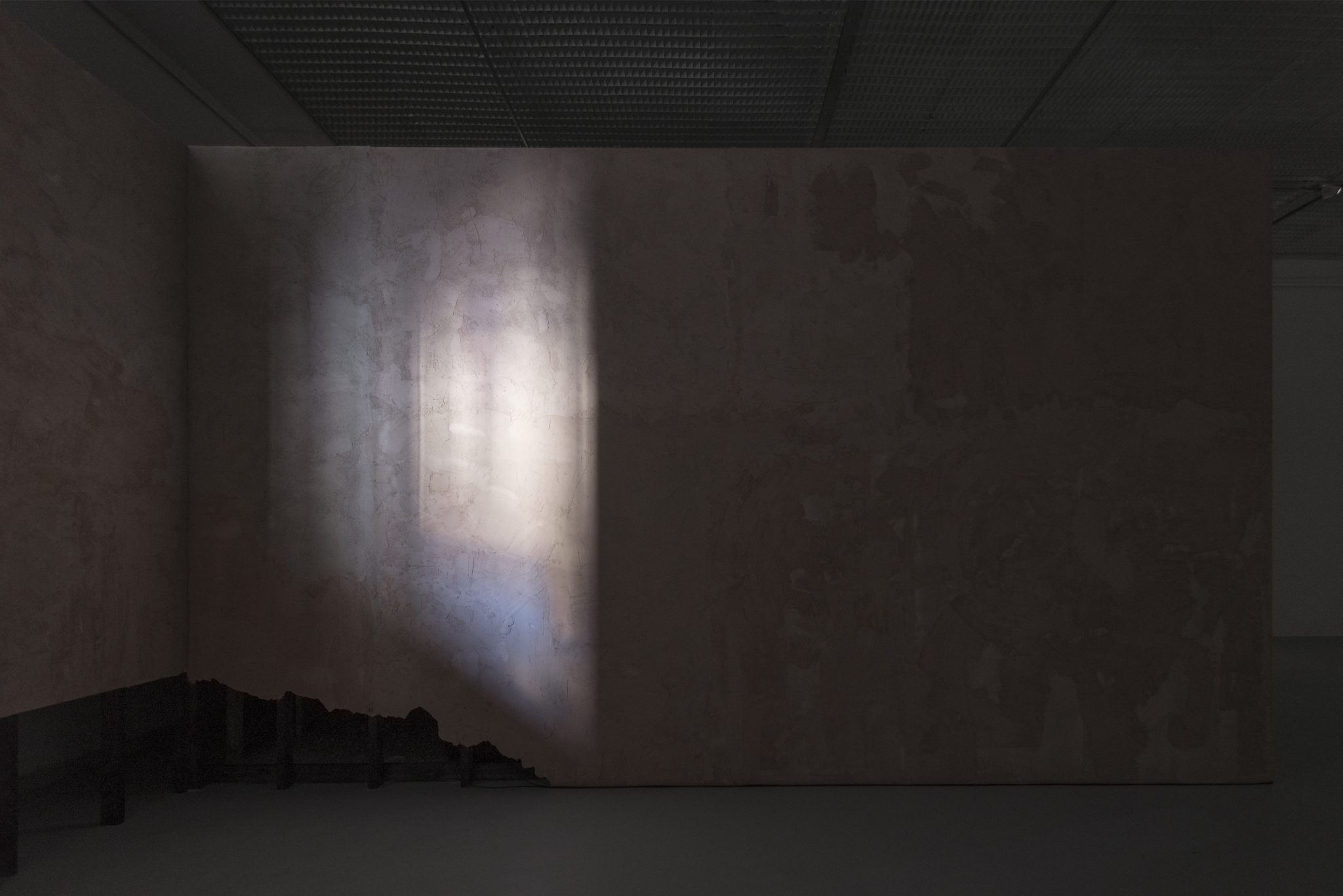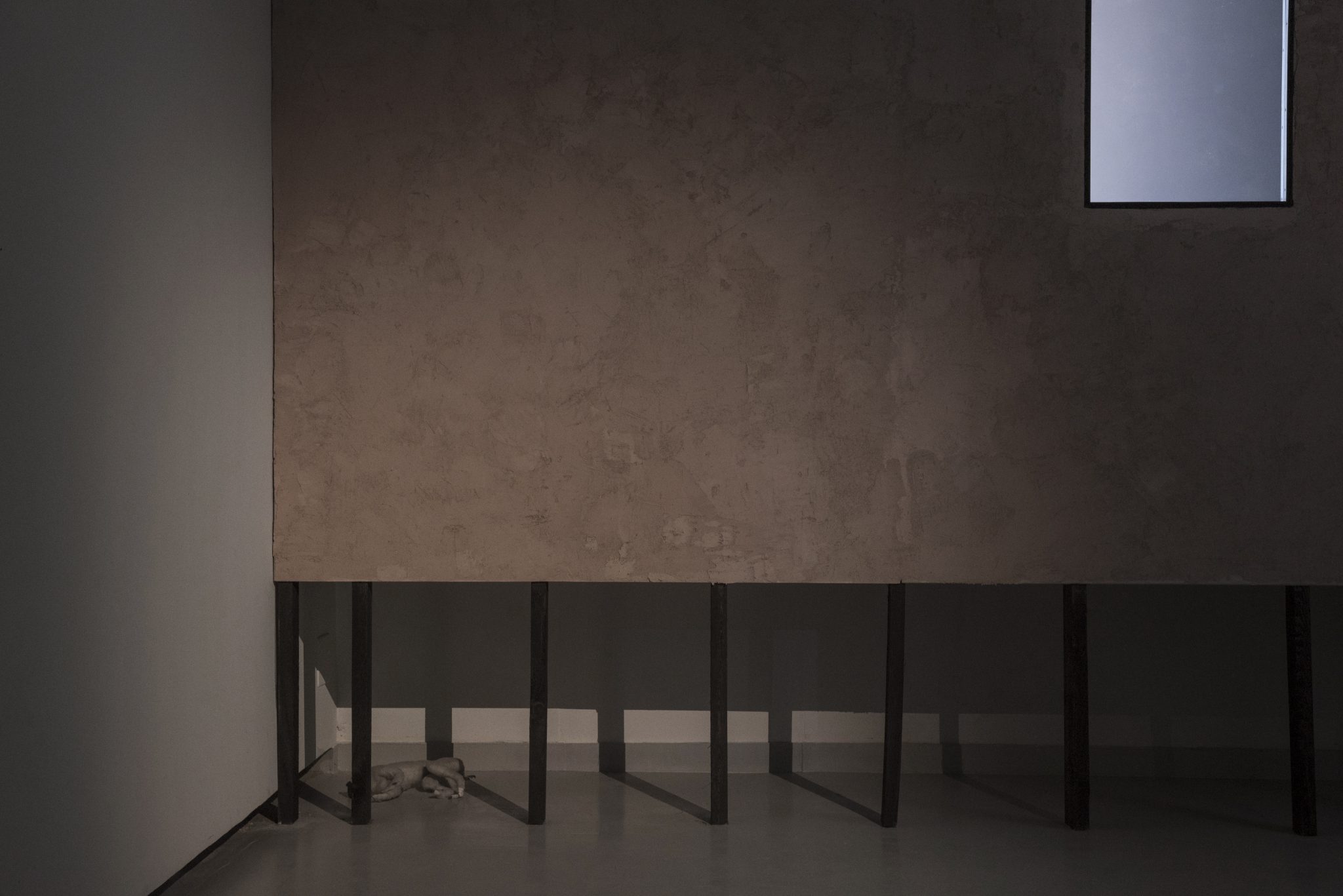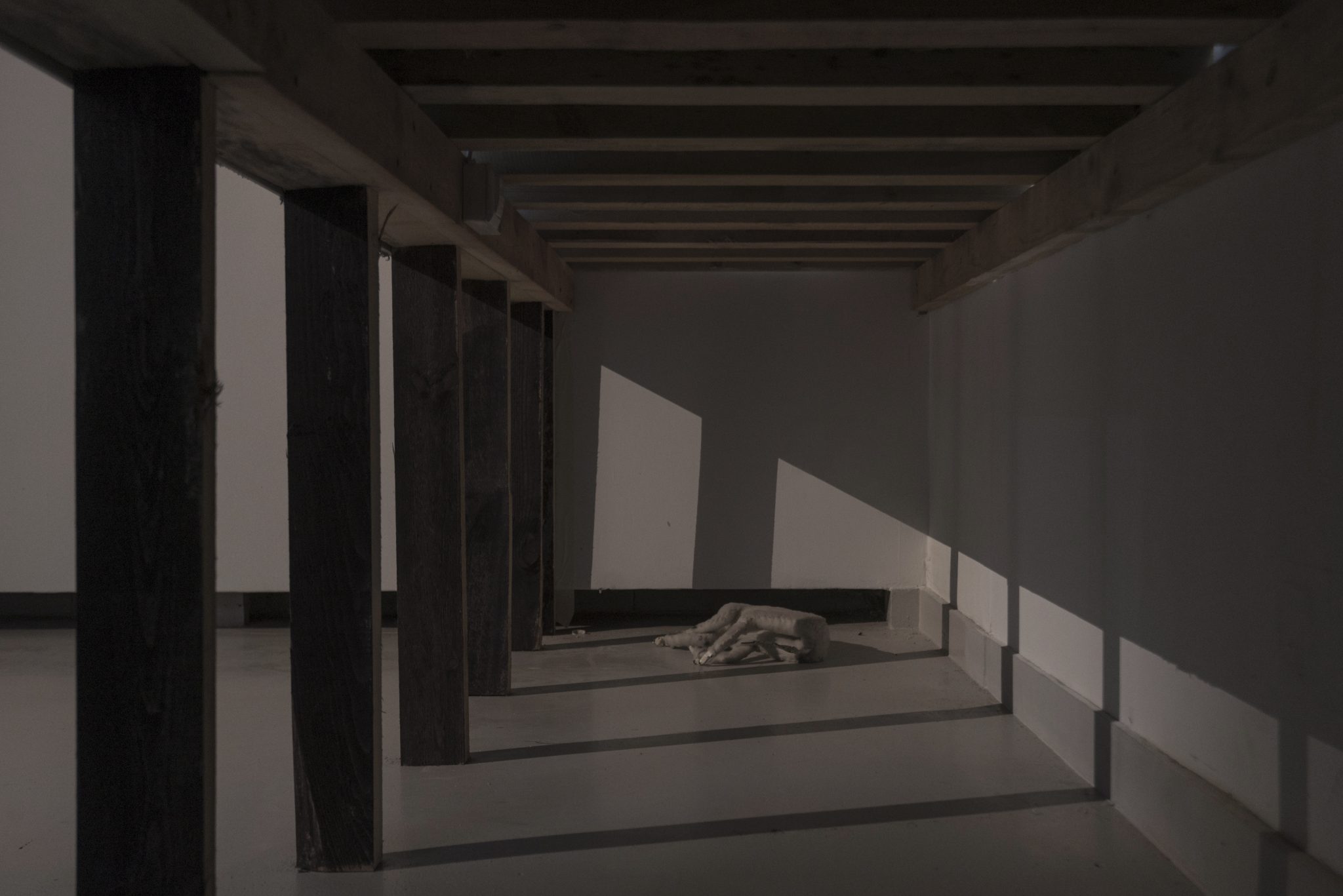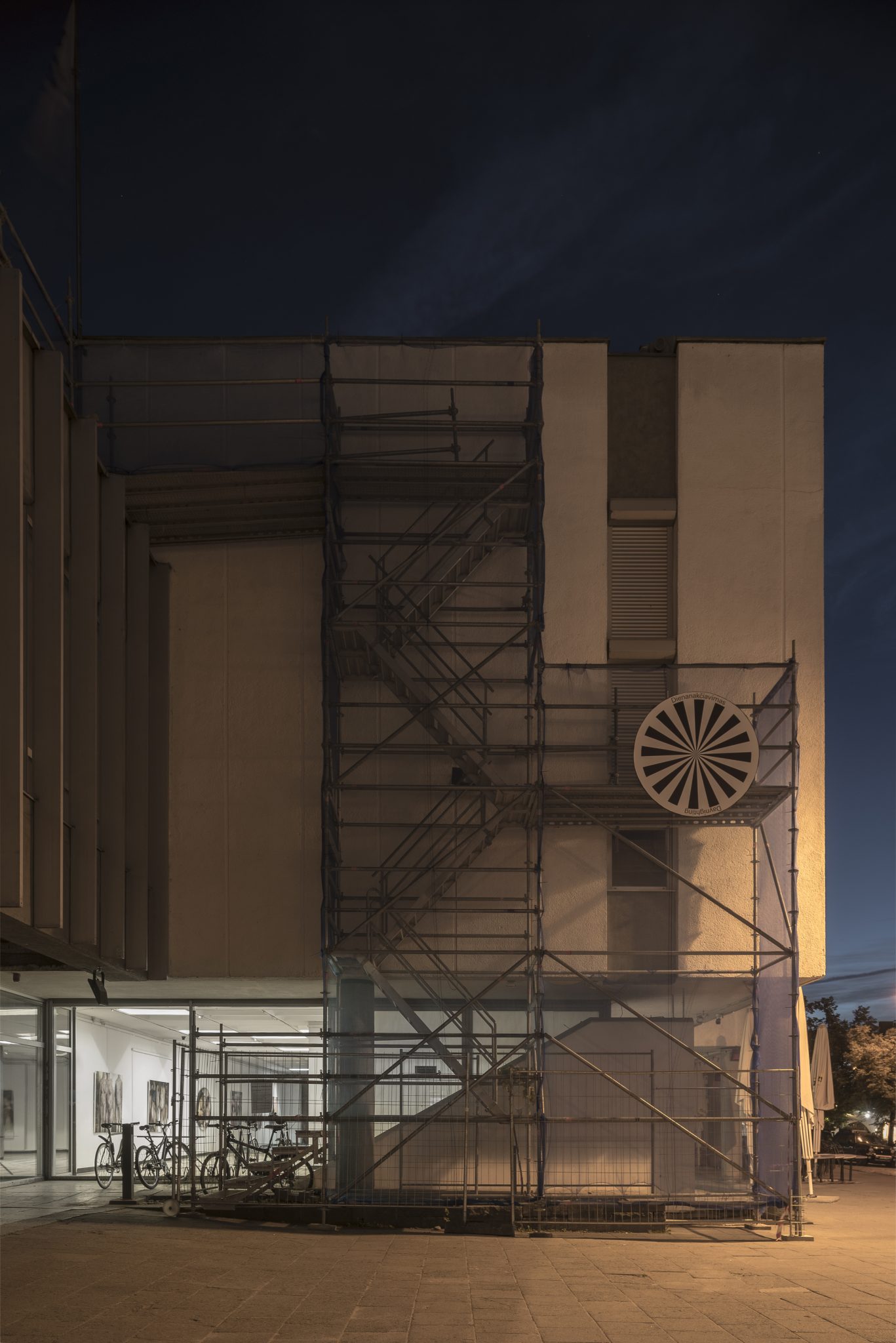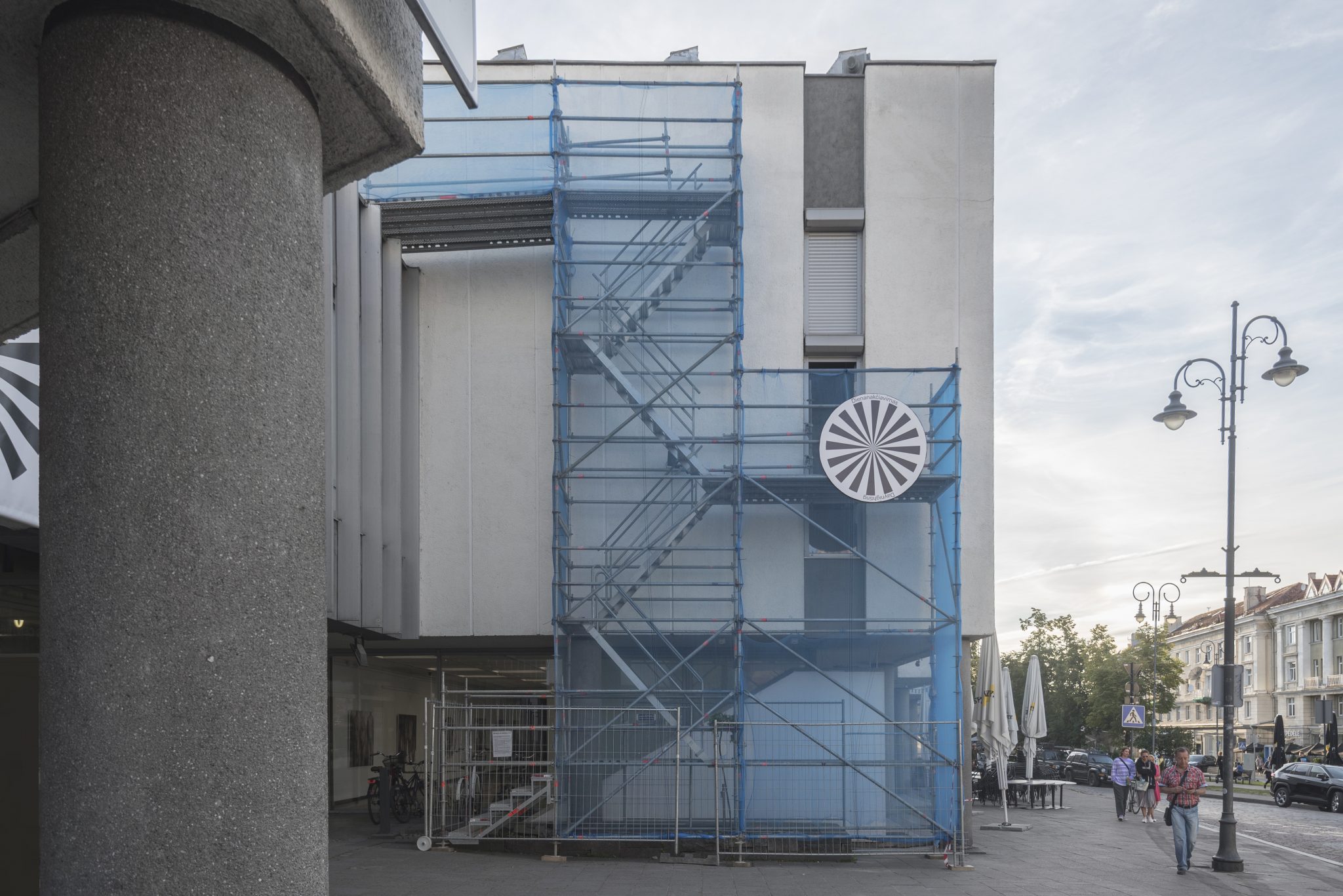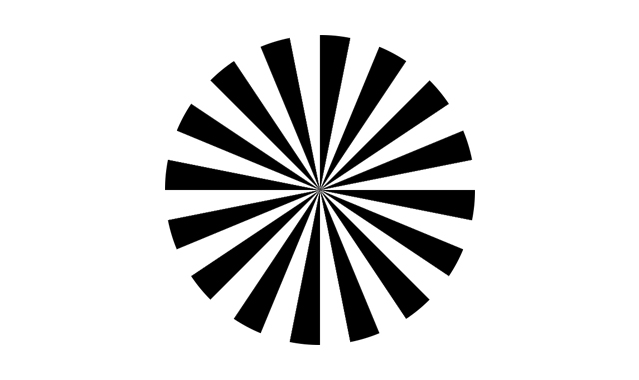
Kipras Dubauskas’ solo exhibition Daynighting is designed for the rooftop of the CAC, inviting visitors to experience both the city and the building through unusual paths. Responding to society’s new attitude towards public spaces, which changed during the pandemic, the exhibition combines outdoor and indoor space prior to the reconstruction of the CAC building.
Daynighting is a comprehensive presentation of the works of Lithuanian sculptor and analogue filmmaker Kipras Dubauskas. Dubauskas is one of the most interesting creators of the younger generation of artists, actively participating in the Lithuanian and international art scene over the last decade. Kipras Dubauskas’ works are characterised by an interest in the underground both geographically and urbanistically, as well as institutionally and politically. The artist explores little-known urban spaces and routes, such as underground tunnels of urban infrastructures that connect different parts of the city, or trails only known to specific groups or locals, or otherwise forgotten. In his practice, Dubauskas organises walks around these places, capturing film footage, which is later incorporated into his installations to create semi-fictional narratives and experiences. Underground territories are parallel urban spaces, which in the artist’s work turn into the unique poetics of institutional and social criticism. Since 2010 Dubauskas has been particularly interested in the expression of analogue cinema, integrating his films into the characteristic architectural and sculptural environments he creates. Evident in this exhibition, is the artist’s tendency to produce works in cooperation – a way of working which is crucial to his practice.
The structure of Daynighting consists of several architecturally separated spaces, corresponding to the different modes of night and day, the underground and the world, and the underground and public life. The exhibition includes architectural interventions, several new large scale works, a new 16mm film and works by other artists. Throughout the exhibition, the presence of a rehearsal studio will be open to a range of invited musicians, who have created a live soundtrack for Dubauskas’ central film and the entire exhibition space.
Kipras Dubauskas’ exhibition is constructed by reconsidering the various operating mechanisms characteristic of art institutions, such as the roles of the exhibition space, the artist and the spectator, and by offering a playful and engaging alternative. The exhibition explores relevant topics of communication, privacy, materiality, social exclusion, and freedom. Seeking to attract different groups of visitors, the exhibition looks for other methods of communication. By reducing the channels of the Internet or social networks and replacing them with different ways of transmitting information, the viewers themselves will become active participants in the exhibition – carriers of the message. The exhibition space becomes a place that allows viewers to identify themselves with the role of outcasts and non-adapters, representing a critical social posture, critically needed today.
In addition to new works by Dubauskas and guest artists, the artist presents his ongoing project Lost Hour. The project consists of eight one-hour-long films or documented events filmed during the additional hour gained between 2 to 3am which appears after reversing the clocks at the end of the daylight-saving period in autumn. Every year, Dubauskas filmed the hour in different “non-places” in different countries – transient urban spaces that have too little or too much relevance to be considered places. Each spring on the night that the clocks go forward, the artist returns to the same places, where he shows the hour filmed in the fall, thus returning the time lost during those six months.
The events of the Lost Hour were filmed in Rotterdam (2011), Ghent (2012), Nida (2013), Dresden (2014), Krakow (2015), Paris (2016), Copenhagen (2017), and Prague (2018).
Kipras Dubauskas (b. 1988) lives and works in Vilnius. He studied Installation at the Royal Academy of Ghent and Sculpture at the Vilnius Academy of Arts. The artist’s works have been presented in solo exhibitions at POST Gallery in Kaunas (2019) and the Ex Elettrofonica Gallery in Rome (2018); and in the group exhibitions Waiting for Another Coming in Vilnius and Warsaw (2018), Some Pieces from a Cracked Sidewalk (through an intent gaze) in Gdansk (2017) and the 12th Baltic Triennial (2015), and Words aren’t the thing at the Contemporary Art Centre in Vilnius (2015); he regularly participates in film festivals, self-organised events in public spaces, and in exhibitions by other artists. Kipras Dubauskas is the founder of the “Spongé” analogue film laboratory collective.
VIDEO PROGRAMME BY GUEST ARTISTS
2020 07 10–07 19 Adam ir E. B. Itso „København H“ (18 min, 2007–2008)
2020 07 21–30 Alexandre Bavard „Bulkyri“ (20 min, 2016)
2020 07 31–09 09 Mykolas Cibutavičius
2020 08 11–16 Robert Kusmirowski „Kanal“ (29,26 min, 2006)
2020 08 18–27 Jon Benjamin Tålleras „Impressions of Topography“ (15.30 min, 2020)
2020 08 28–09 06 Eglė Razumaitė „Notes from Underground“ (19 min, 2019)
